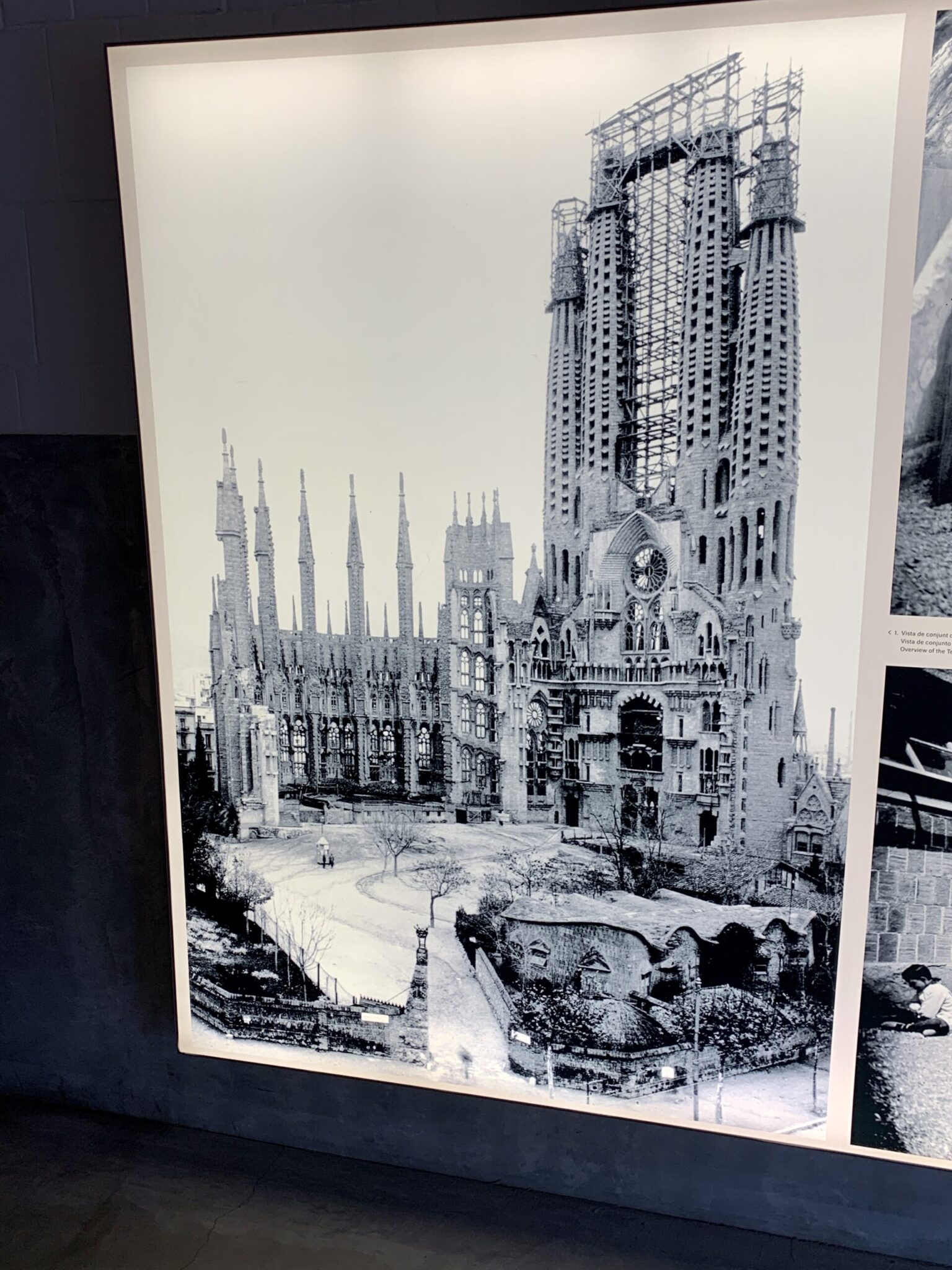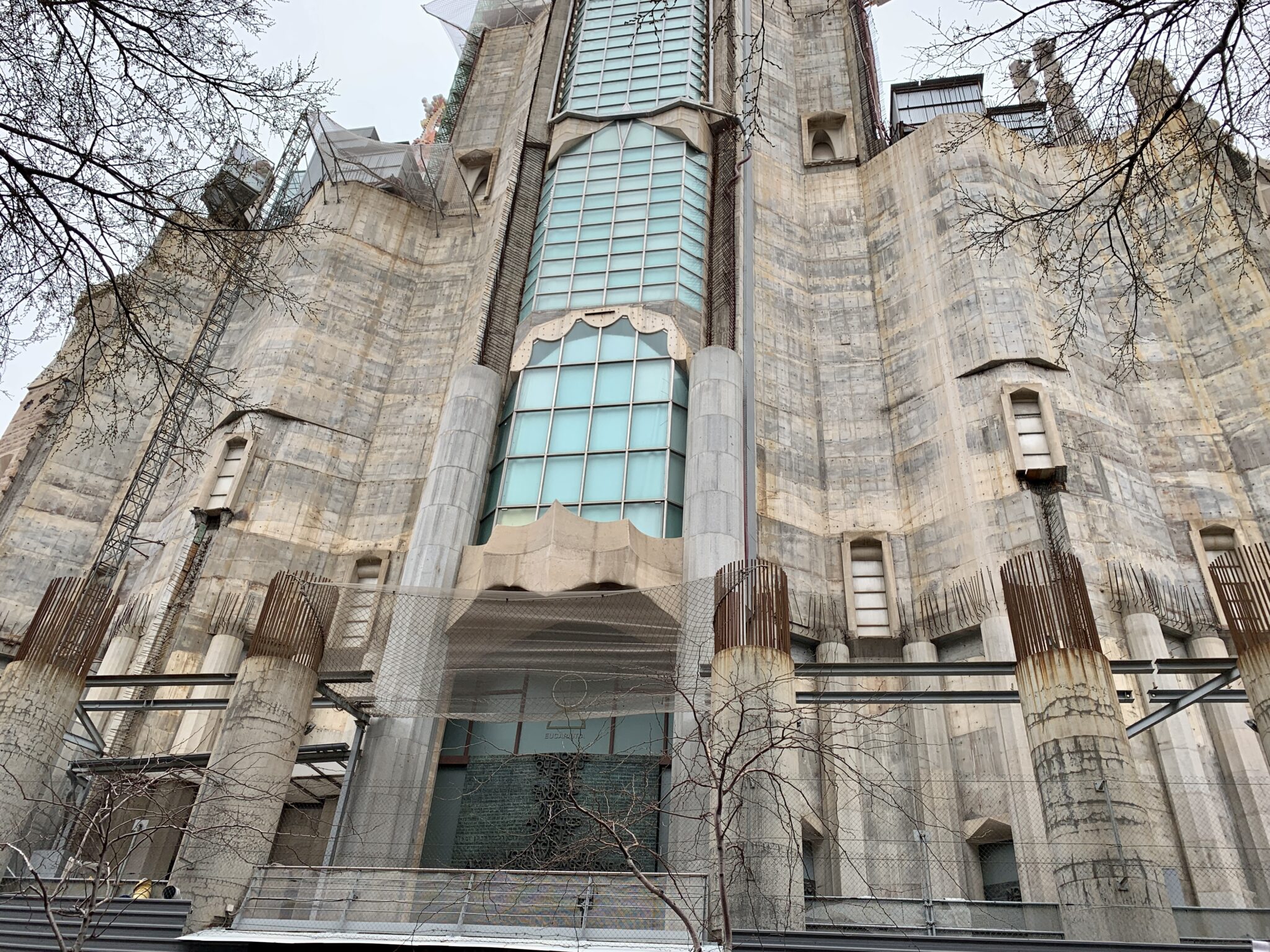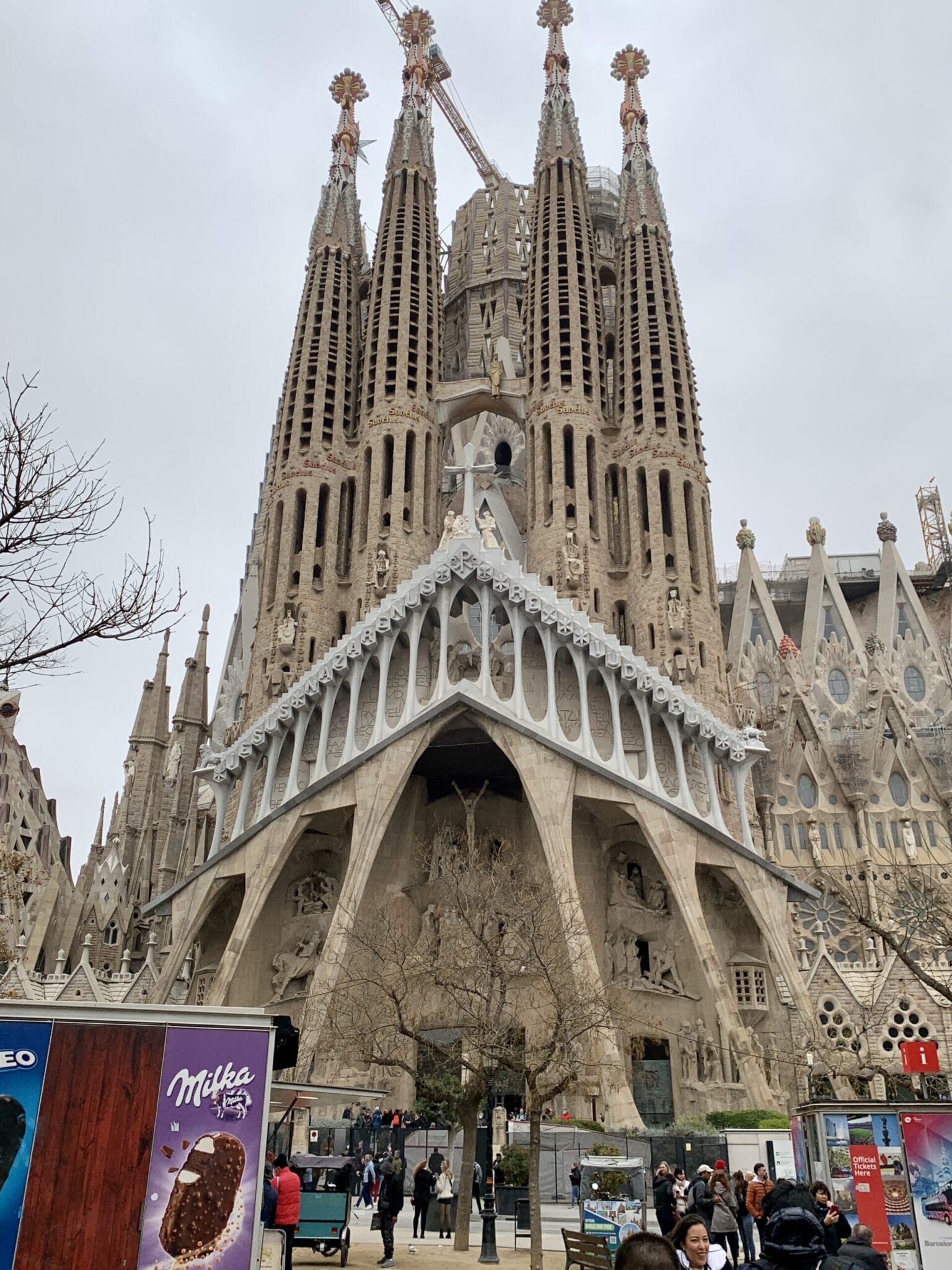
I’ve wanted to see this place for quite a while. When I first came across photos of this crazy church with its fruit-topped spires and wild colors, i knew that it was a something to visit before shuffling off the old mortal coil. Before Gaudi, i guess the big

I’ve wanted to see this place for quite a while. When I first came across photos of this crazy church with its fruit-topped spires and wild colors, i knew that it was a something to visit before shuffling off the old mortal coil.
Before Gaudi, i guess the big innovation in cathedral building was the flying buttress. Want to build a huge building with lots of big windows? Better put lots of buttresses on the outside of the walls to hold them up. In its time (see Pillars of the Earth) this was a great innovation. But Gaudi wasn’t a fan. Flying buttresses take up land that, in his view, was better used inside the building.
So what to do? Gaudi turned to nature and was inspired by trees. He studied how their trunks twisted as they grew, branched, and angled outwards. He thought that building his pillars similarly might be the answer. and it was. But he didn’t just cross his fingers and hope for the best, he did experiments, made models, and tried out his ideas on other, smaller buildings.
These’s a lot to know about this fabulous structure. If you’re interested, this is a good place to start. Me, I’m just going to show you what I saw. Remember, all four facades are different, even the style differs. I can’t show everything because some parts are being renovated while others have yet to be completed.
On approach, our first view was of the Passion facade It is relatively austere, reminiscent of human bones, and tells the story of the crucifixion.
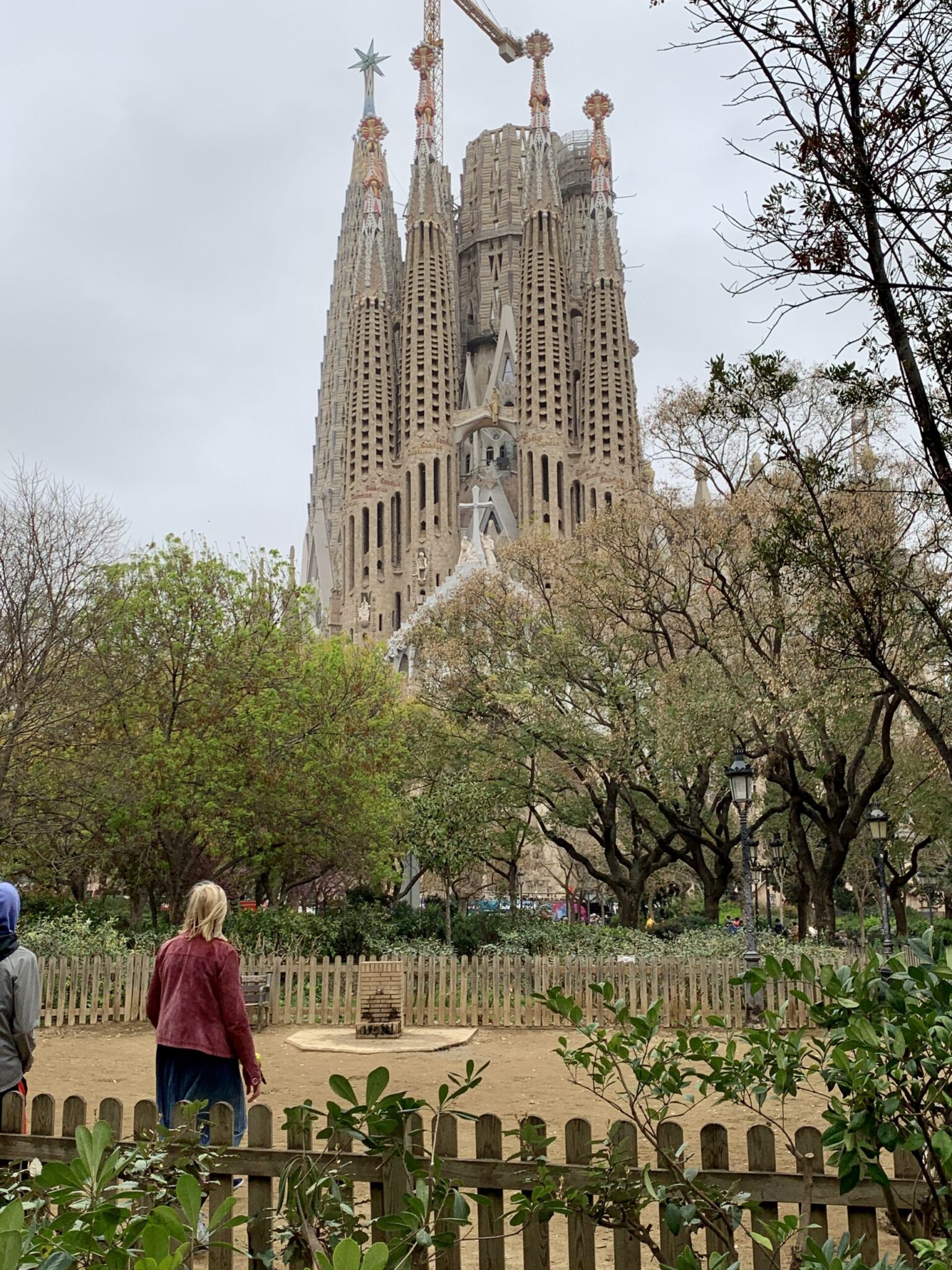


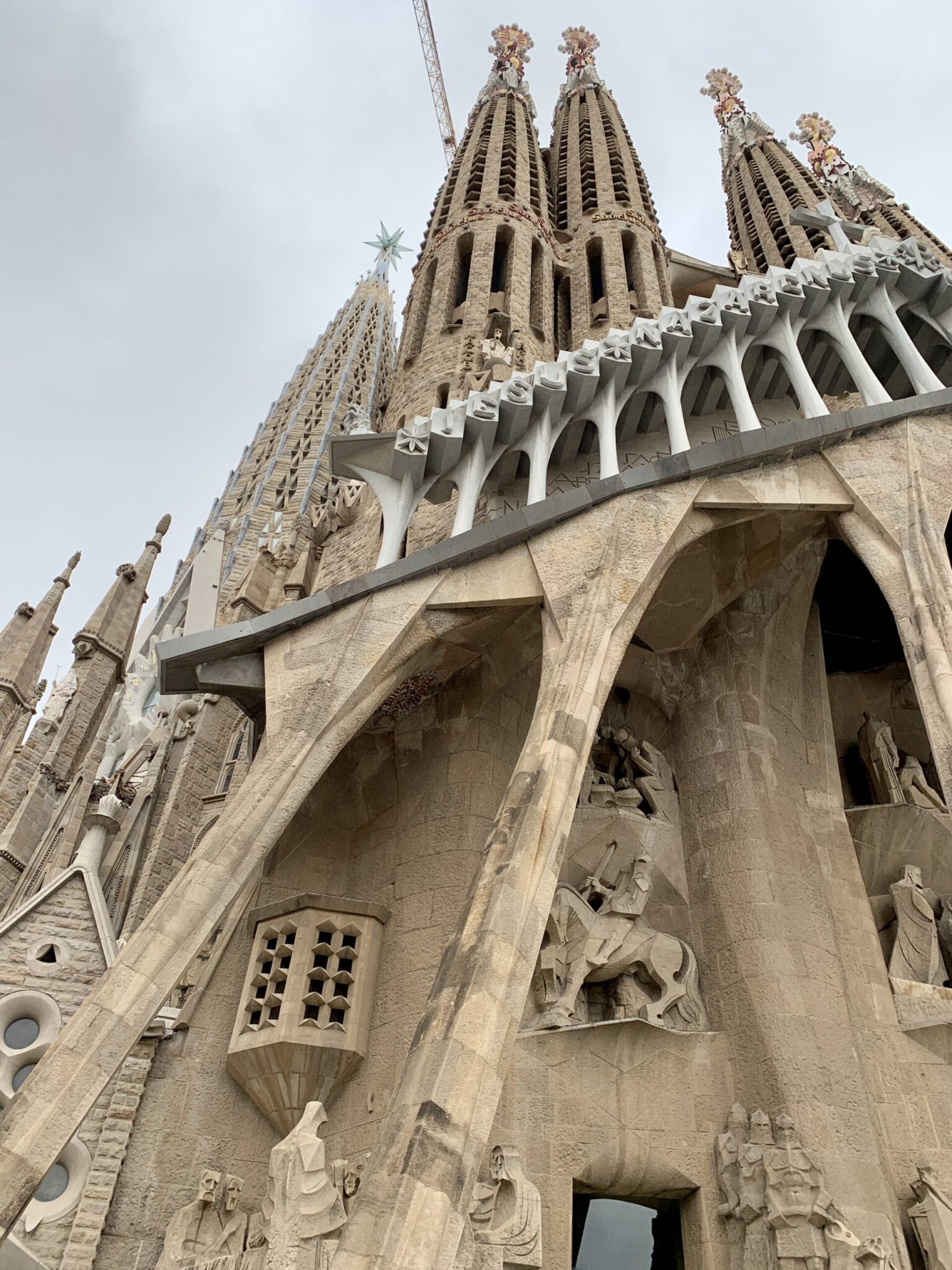

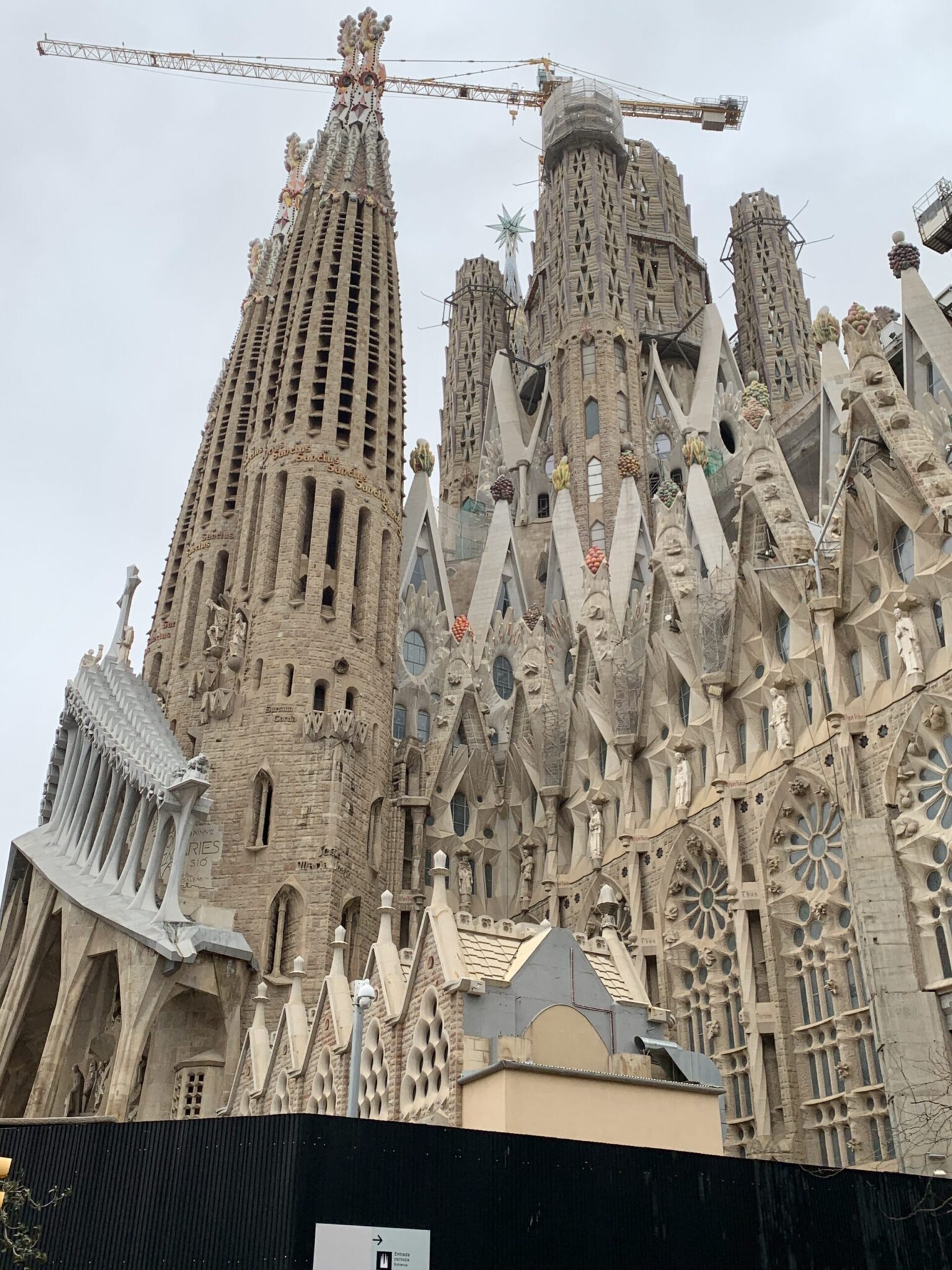
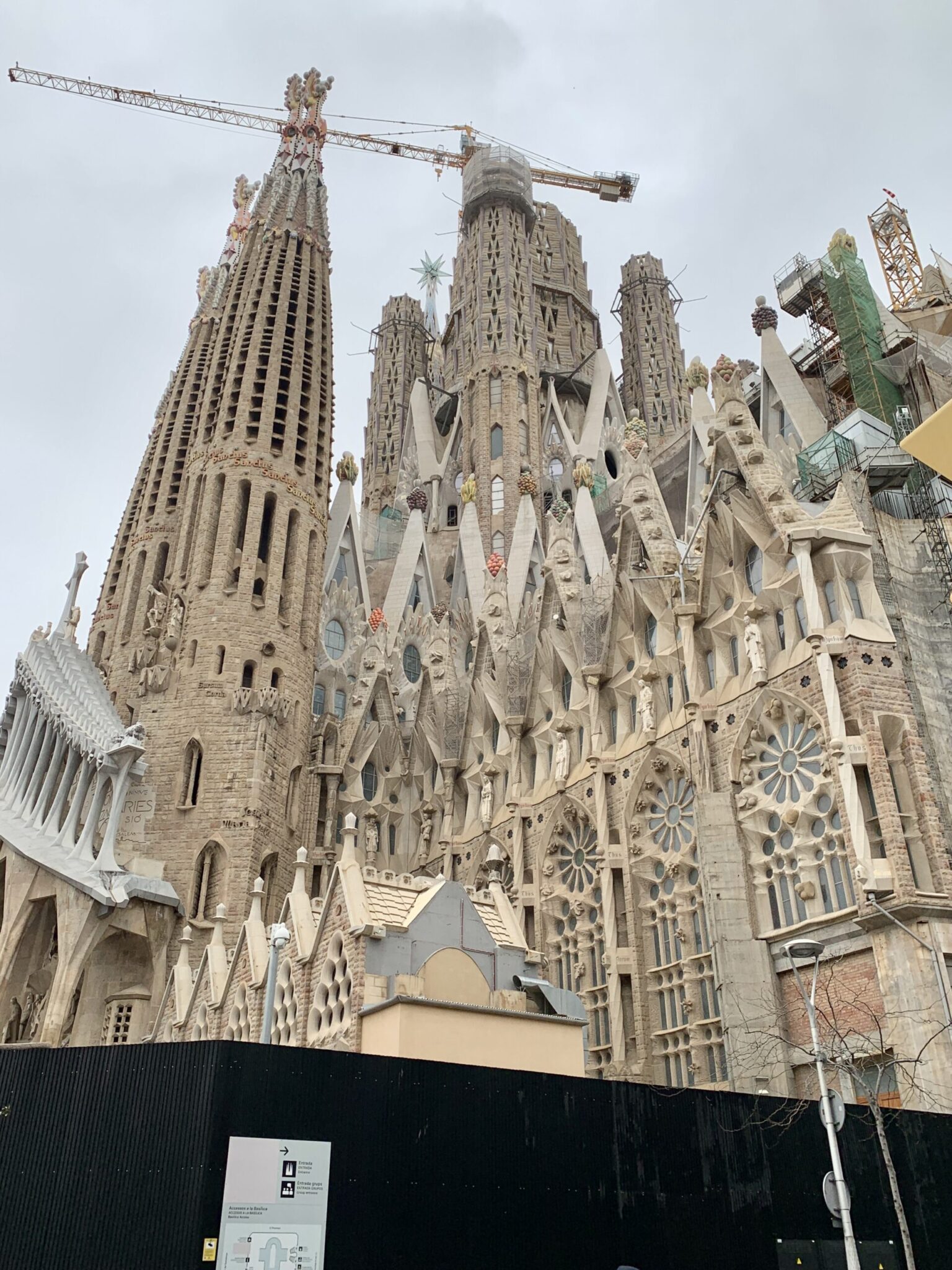
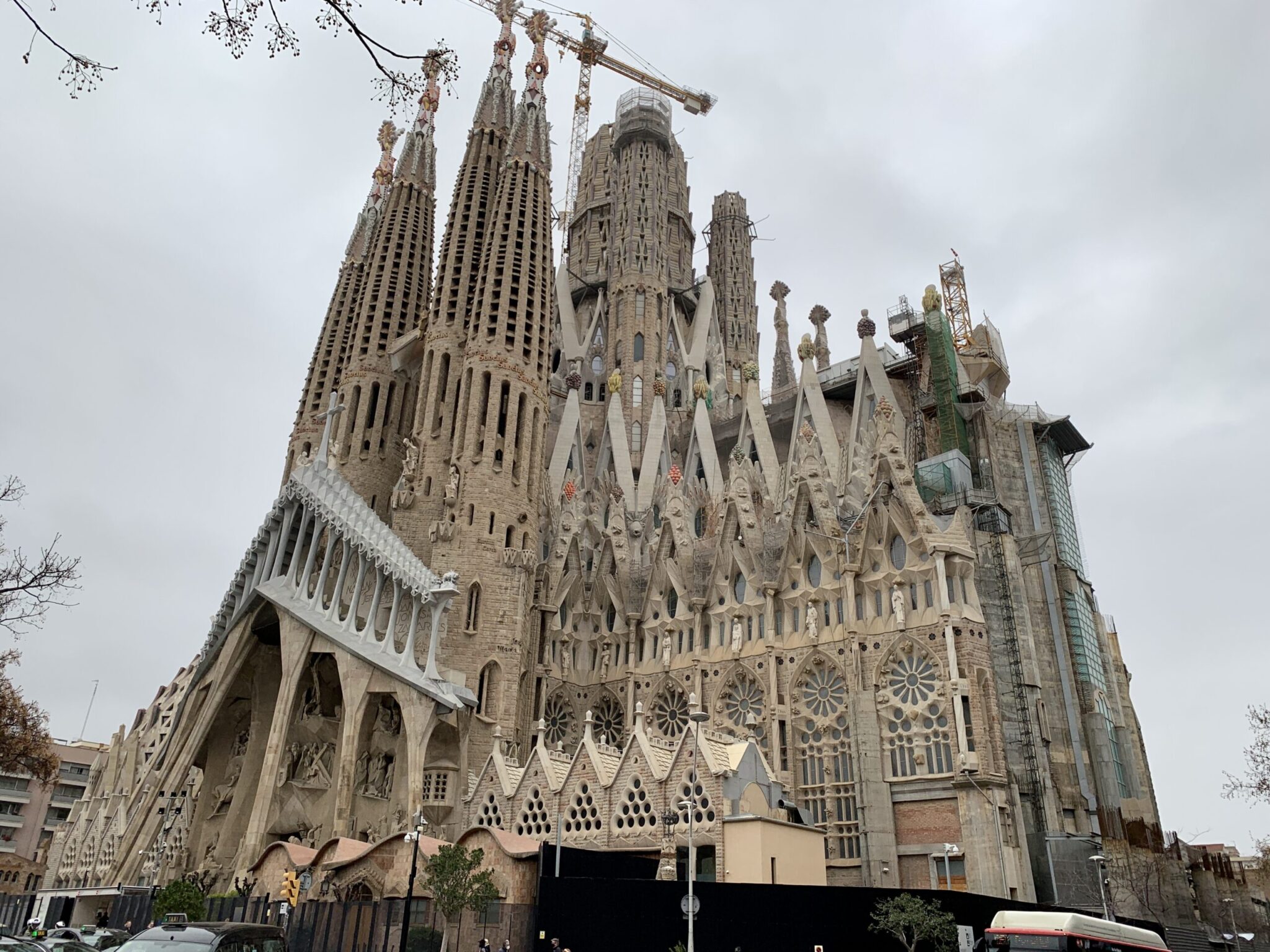
Sheltered under the great arch are sculptures that tell the stories of the Last Supper, Christ’s trial, the Crucifixion, and more.



Saint Peter, the fisherman, is identified by his robes that form the shape of a boat.

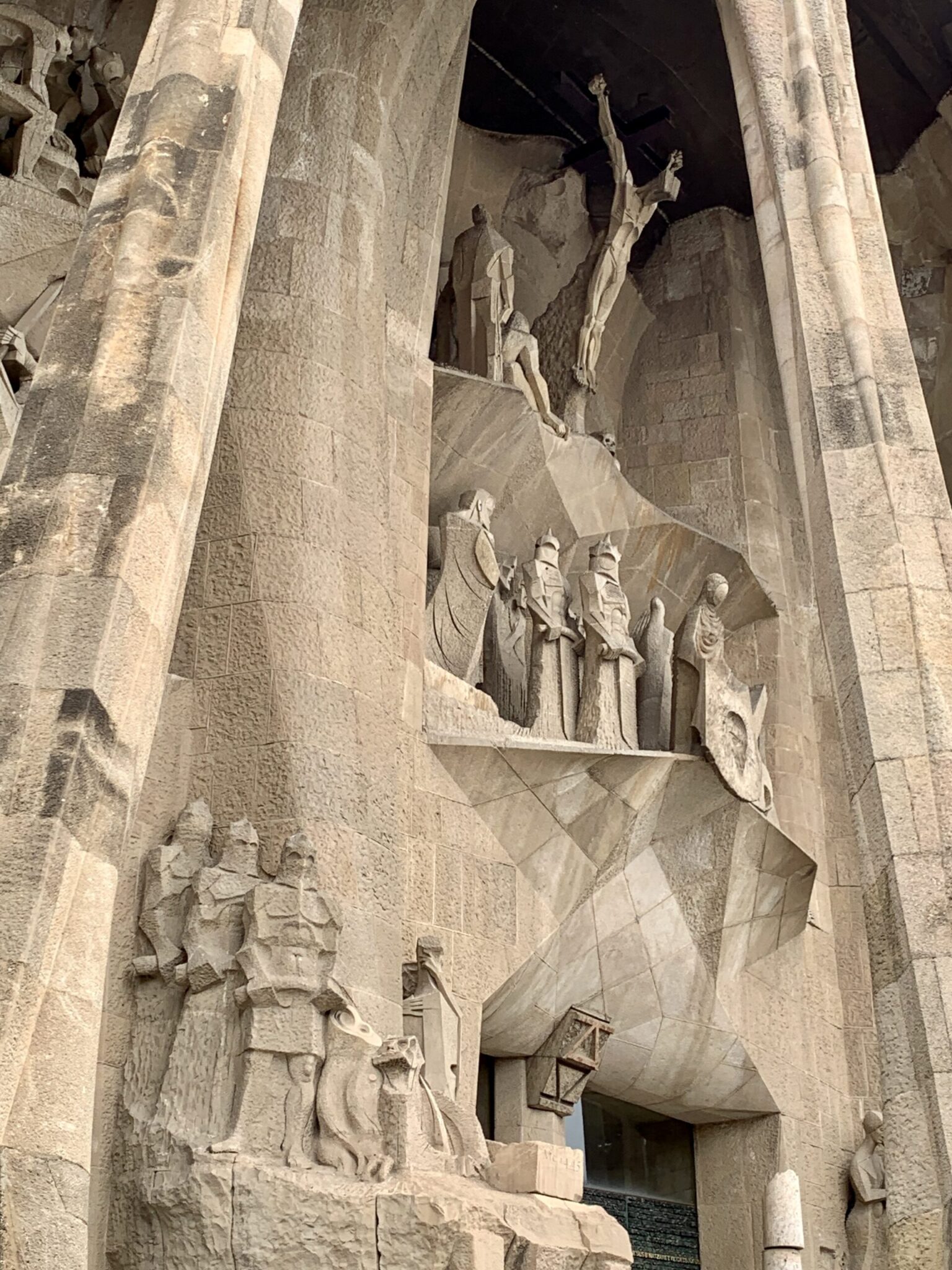
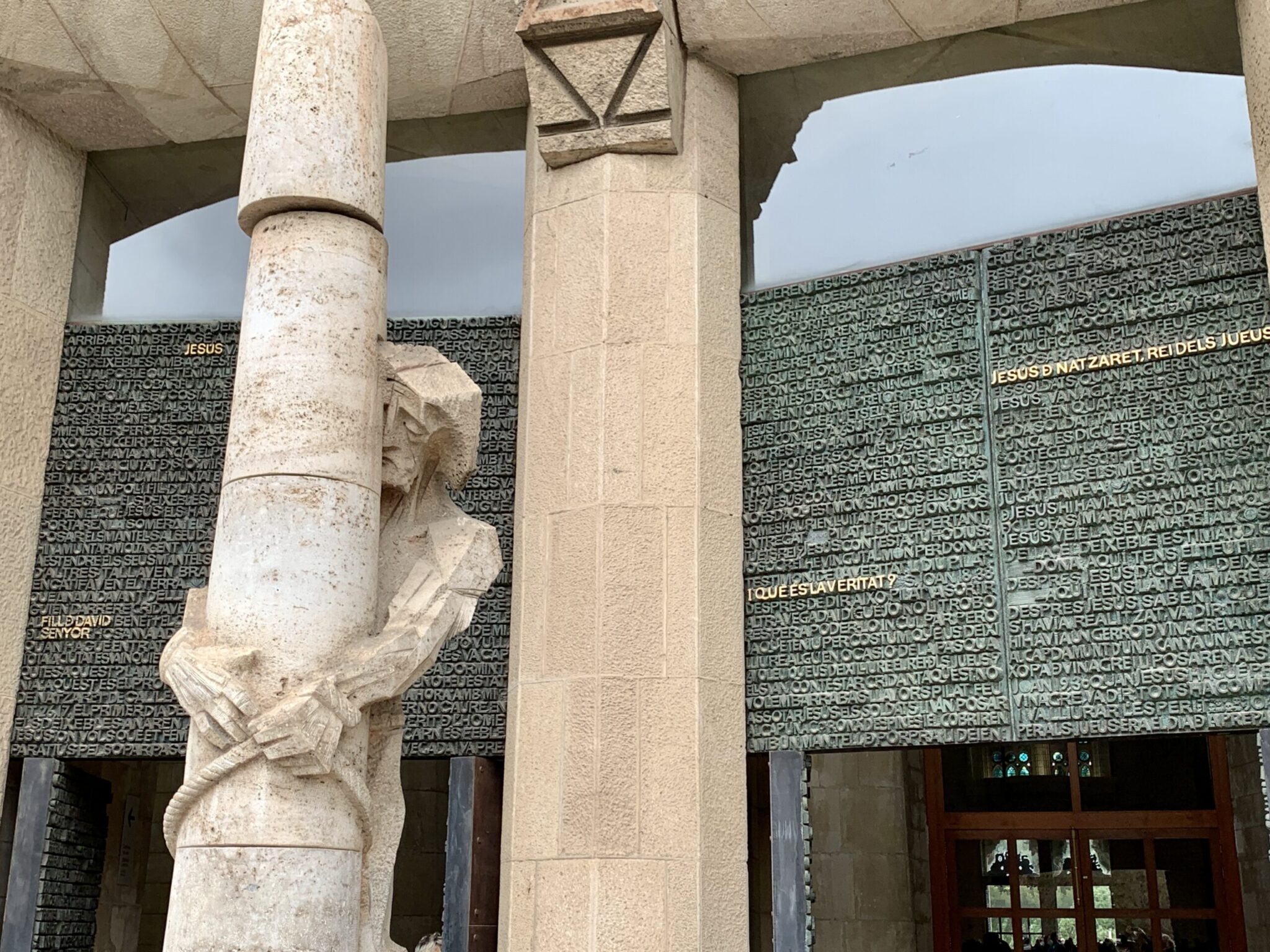
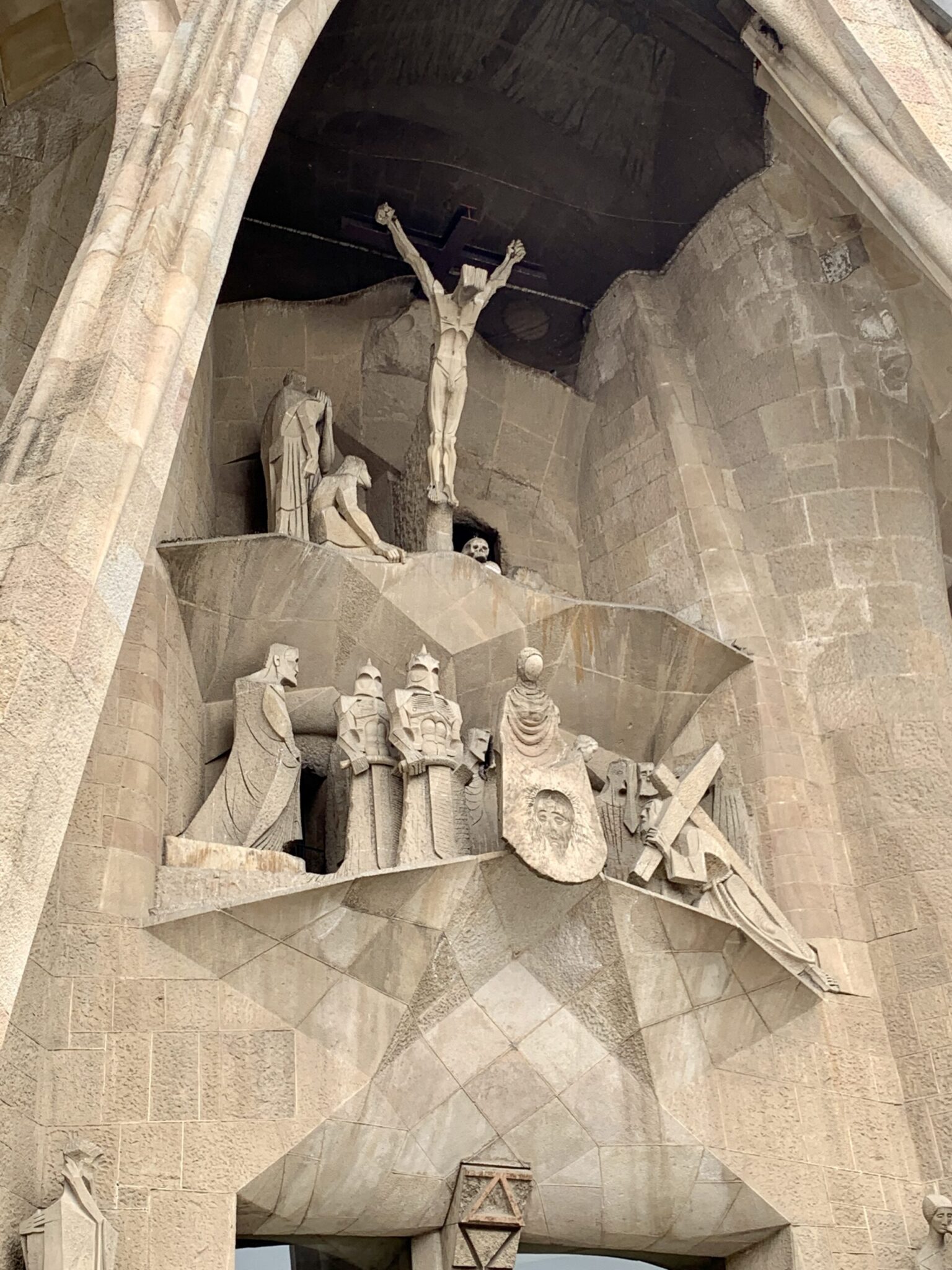
The Nativity facade is much more ornate, filled with images of life. Also some pretty fine doors.
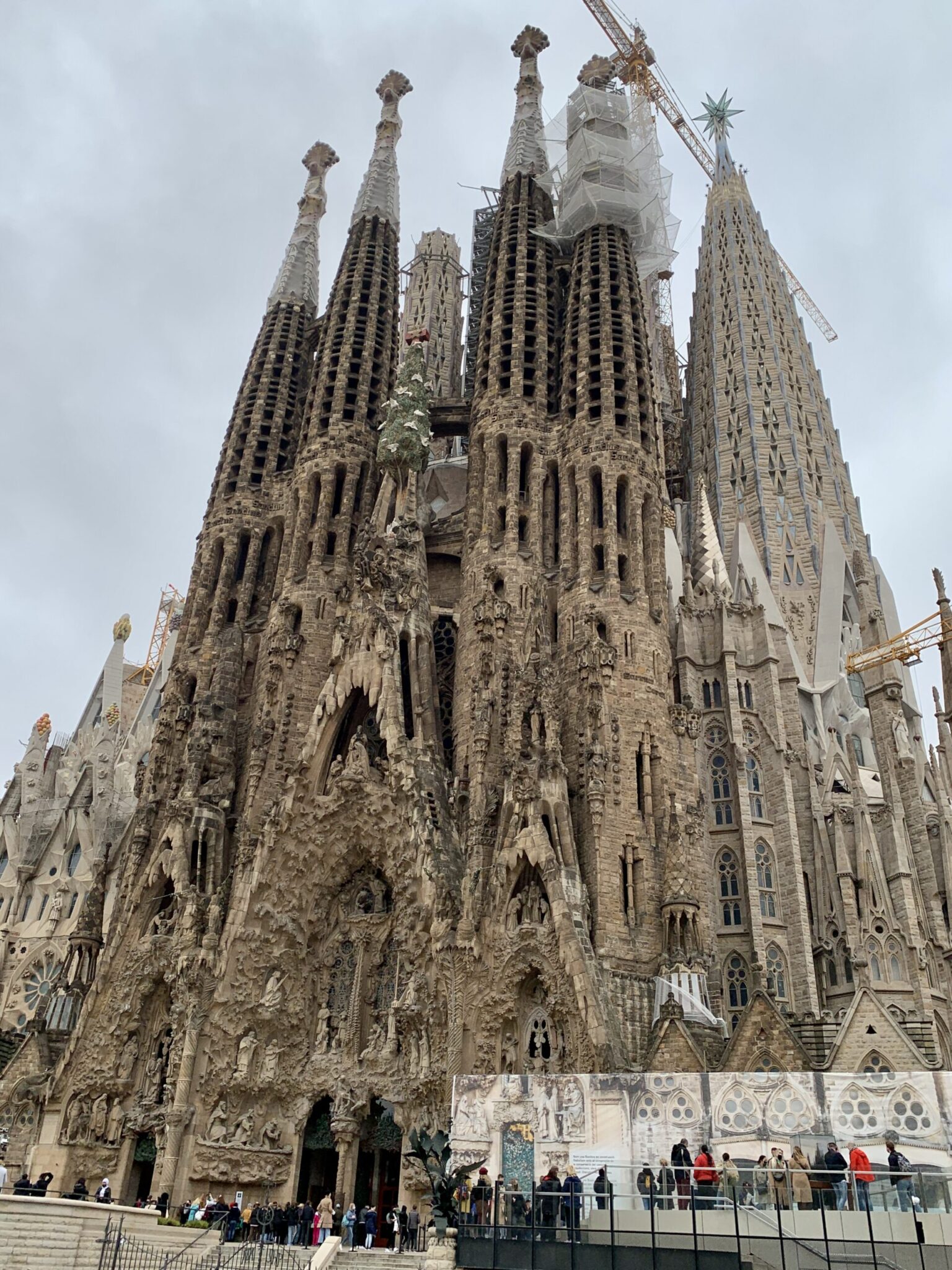
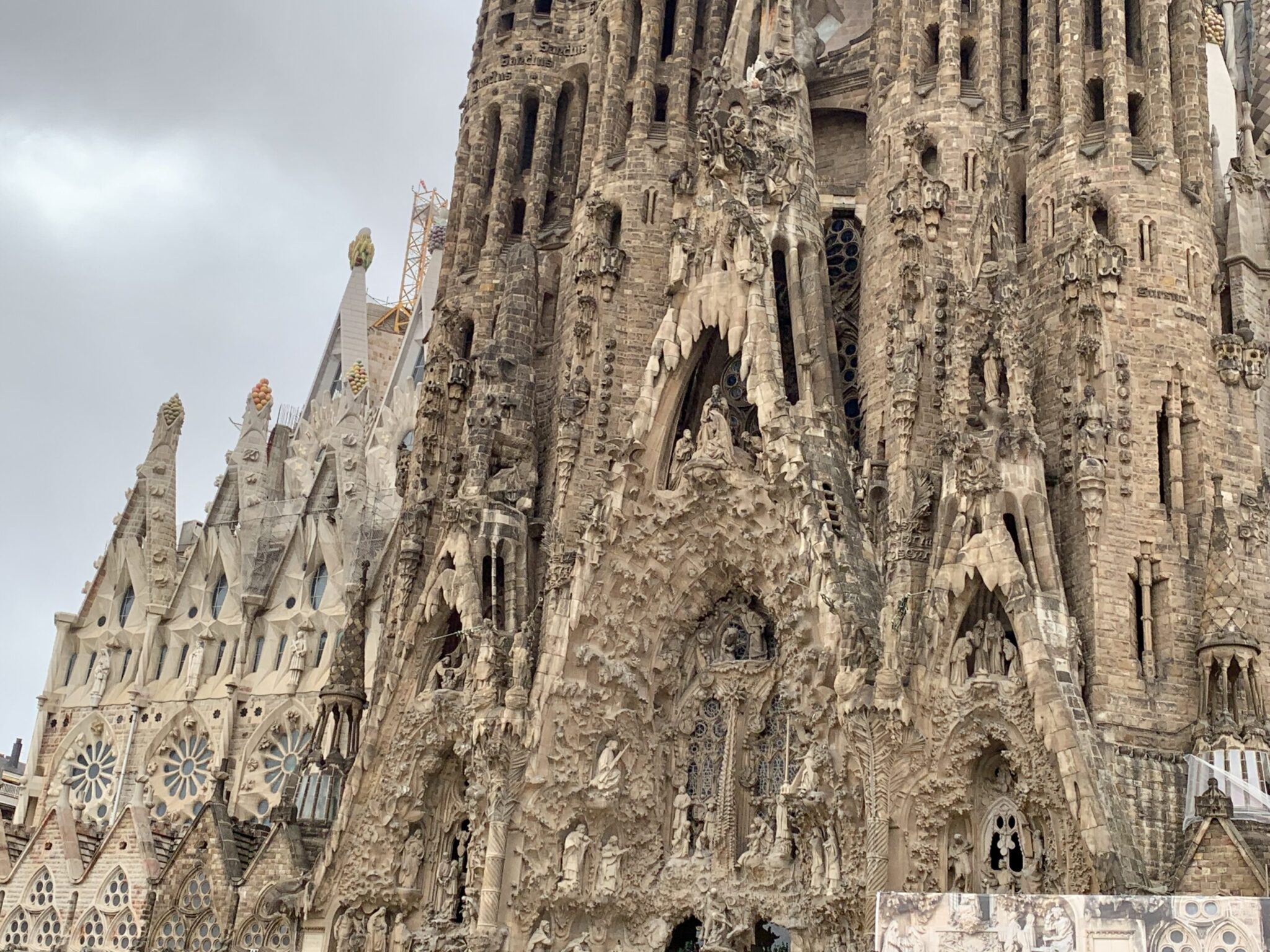
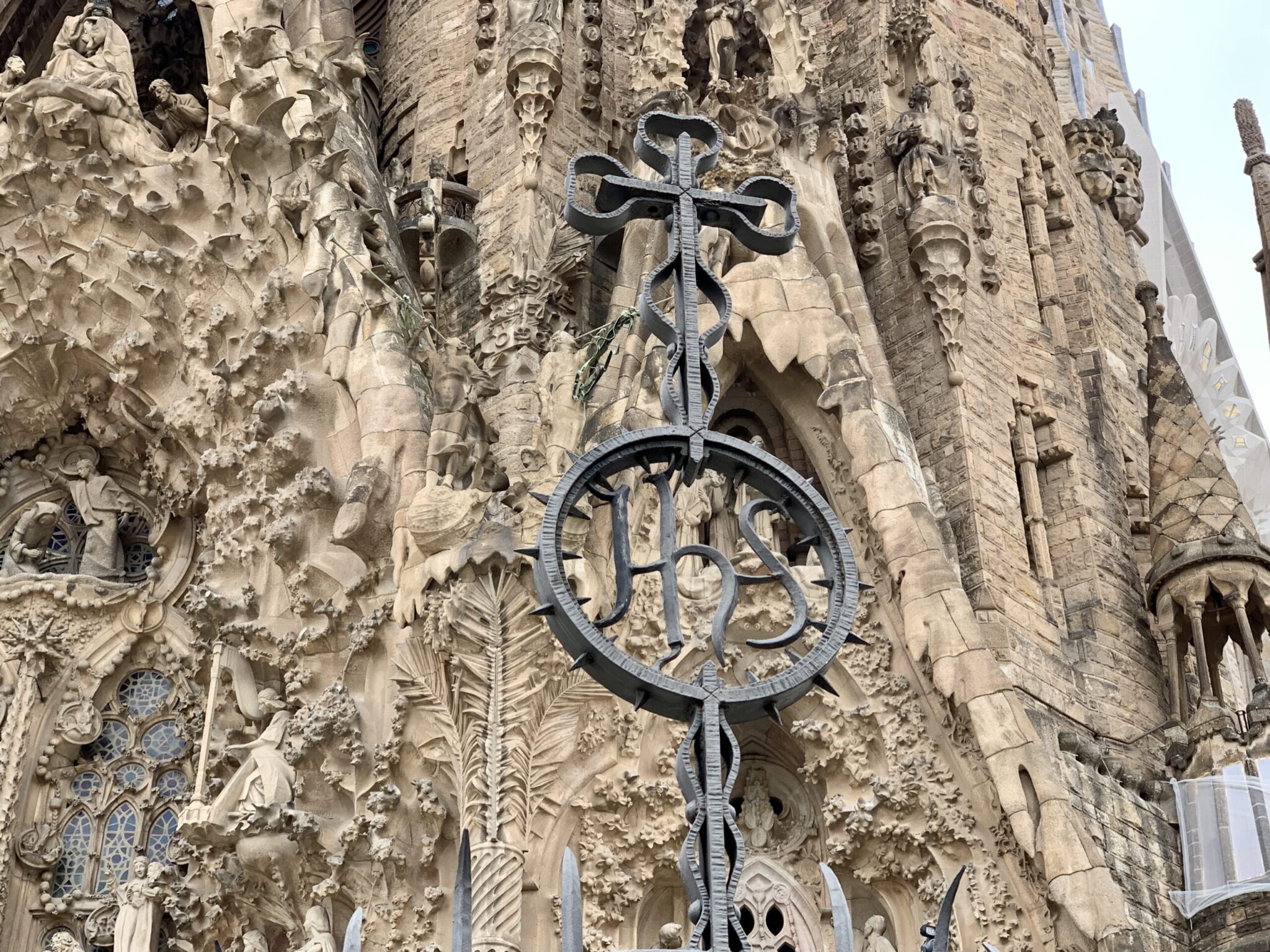

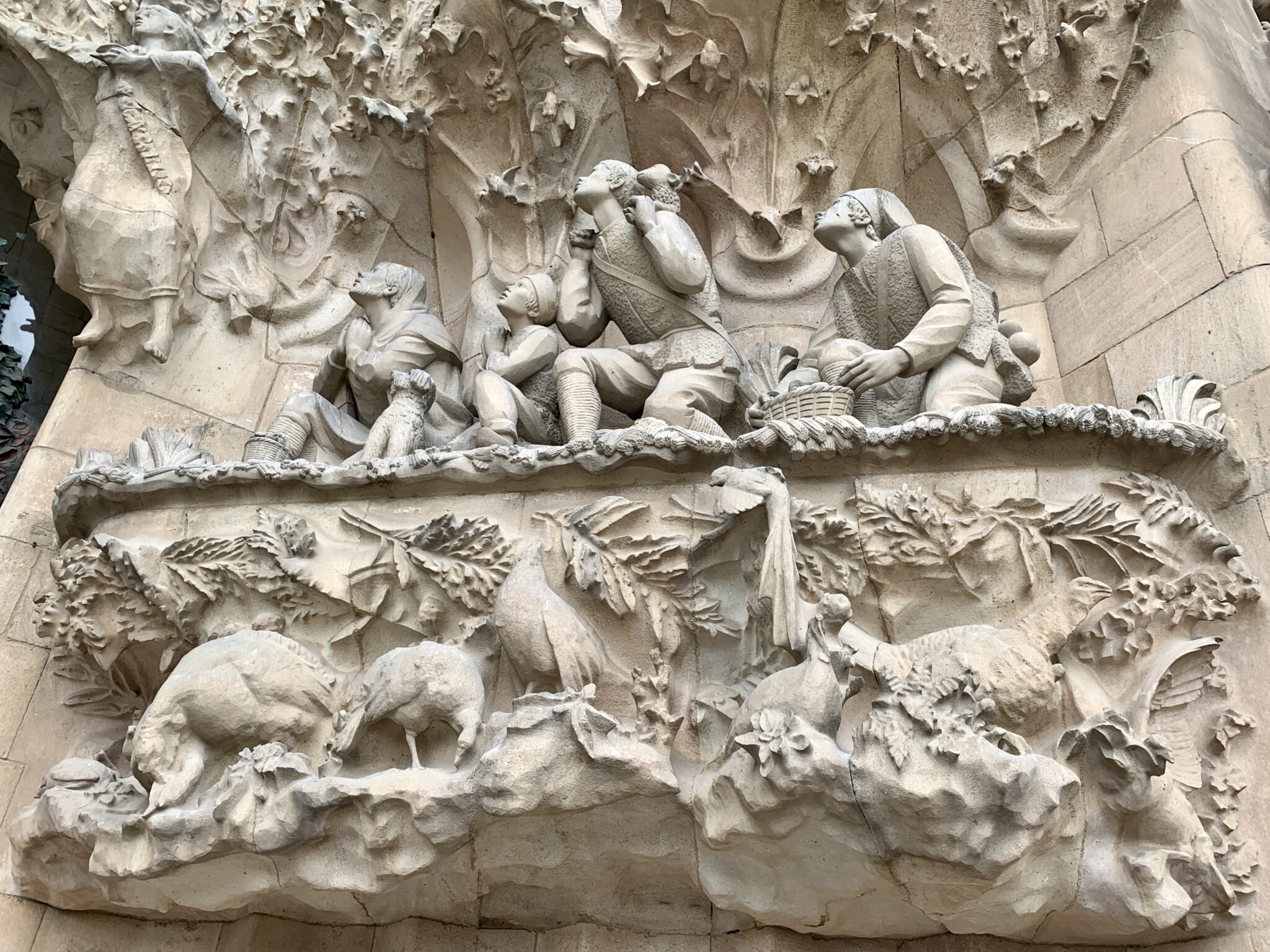
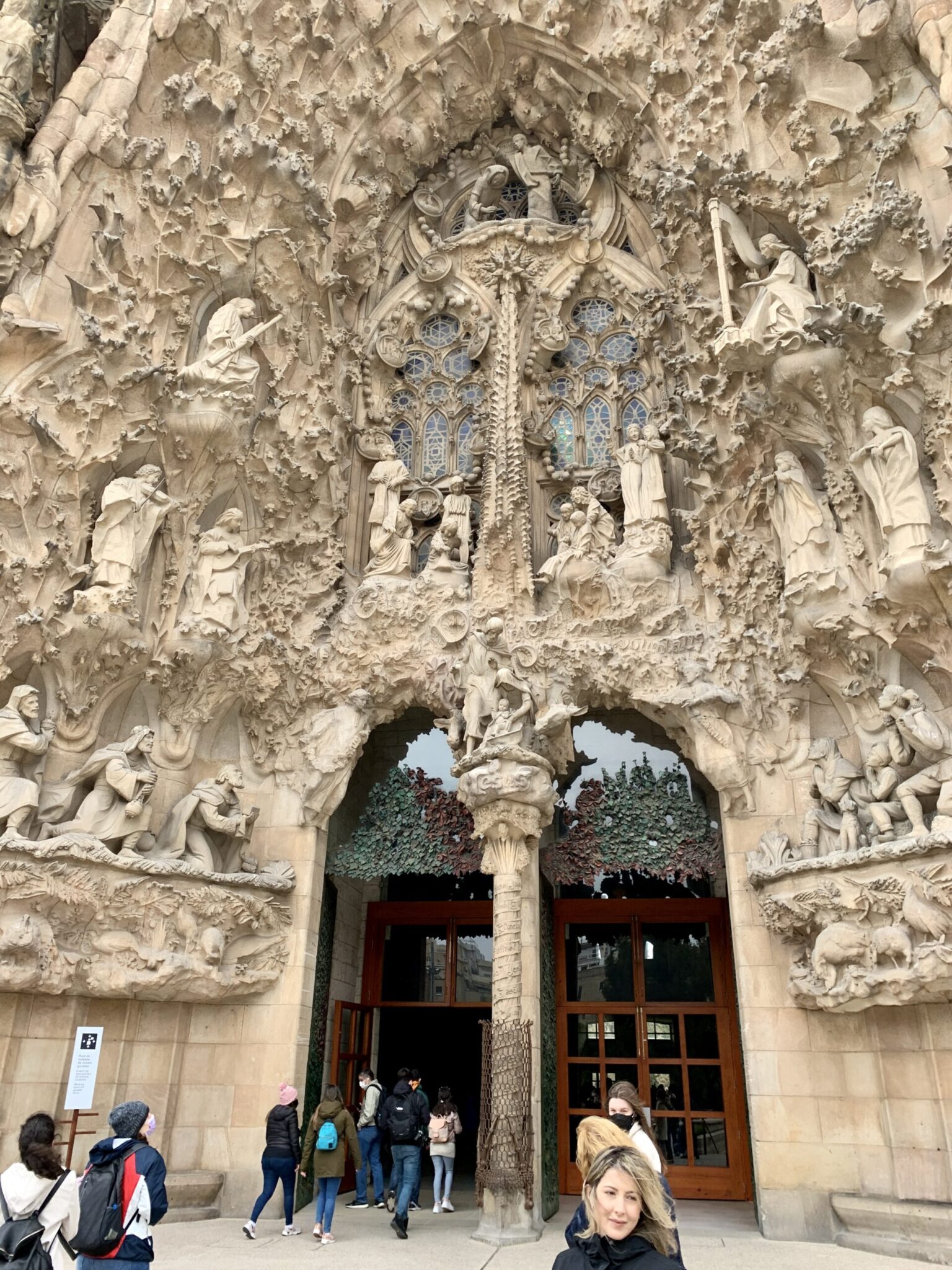
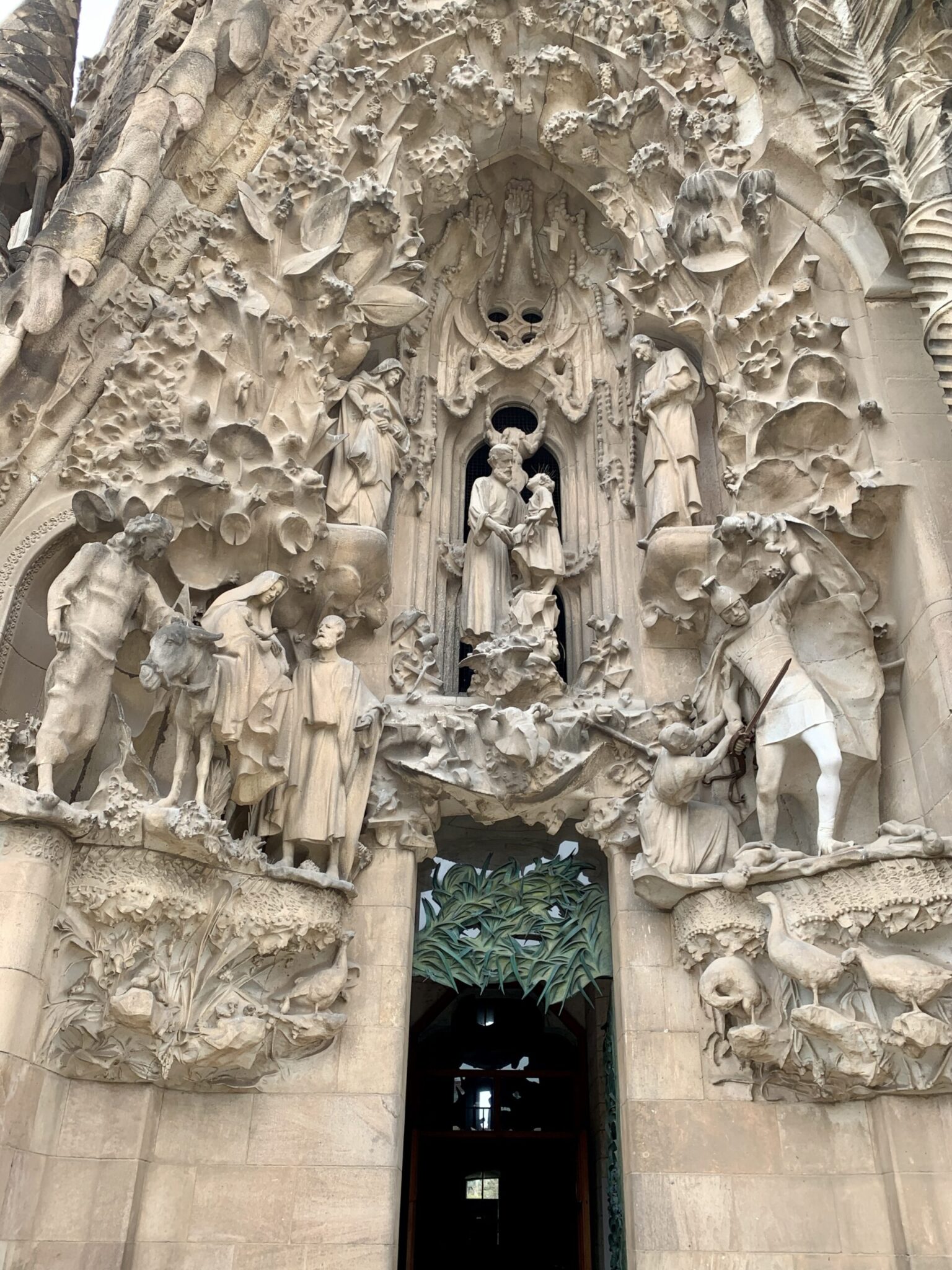
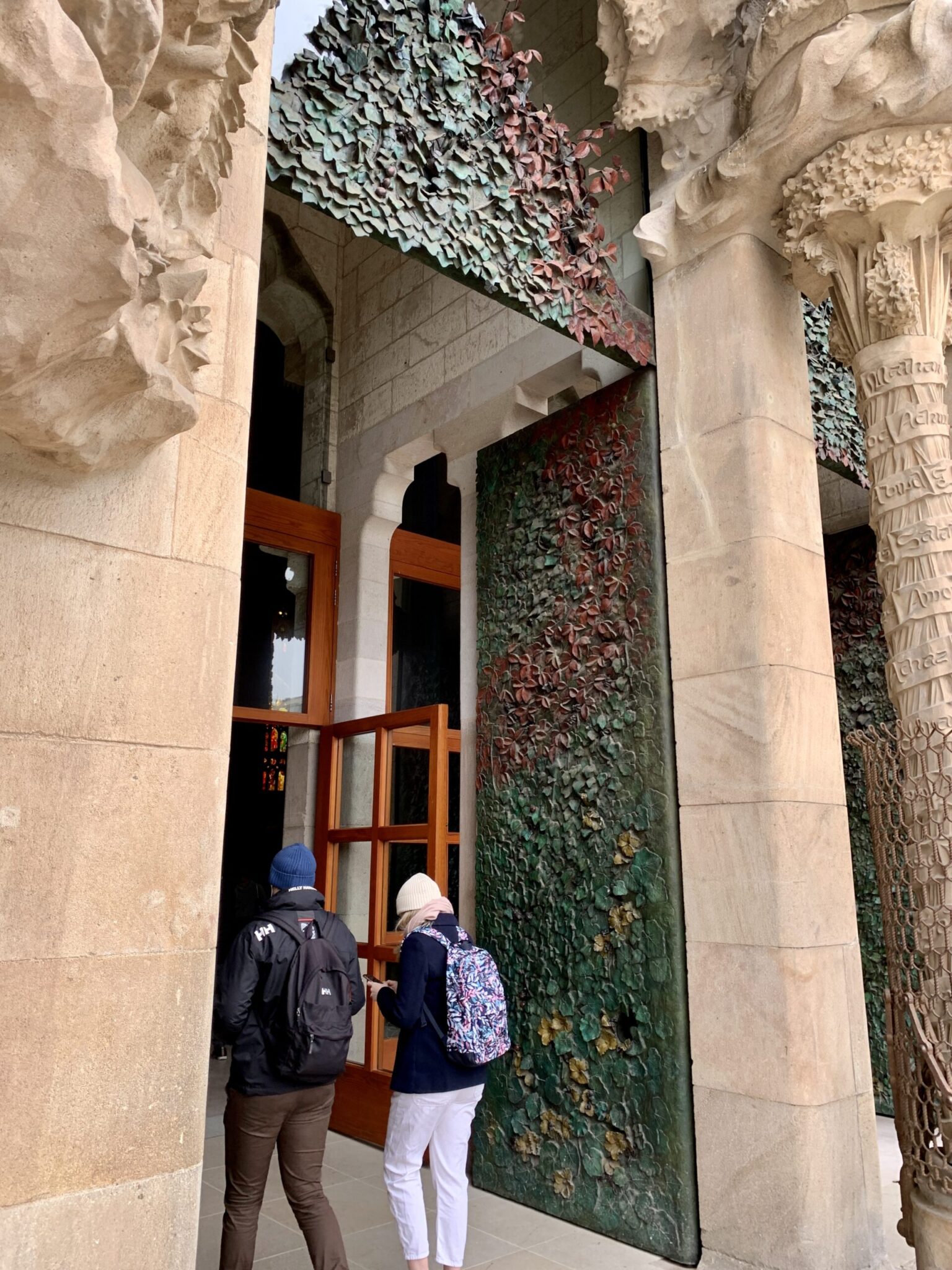
But Steve, I hear you say, doesn’t this fine building have anything inside? Well, yes, yes it does.
As you enter the forest, notice a couple of things. Some of the ”trees” support the inner roof and some pass through it to support higher structures. Also, roofs are heavy. That’s one of the reasons that flying buttresses were invented. A heavy roof presses down on the supporting walls causing them to buckle out. Hence, the buttress pushing in. Gaudi lightened the inner roof by making holes in it. Some are filled with decorative panels, some remain empty to this day.
Let me call your attention to Parachute Jesus, a term of my own invention that may earn me quite a spell in Purgatory.
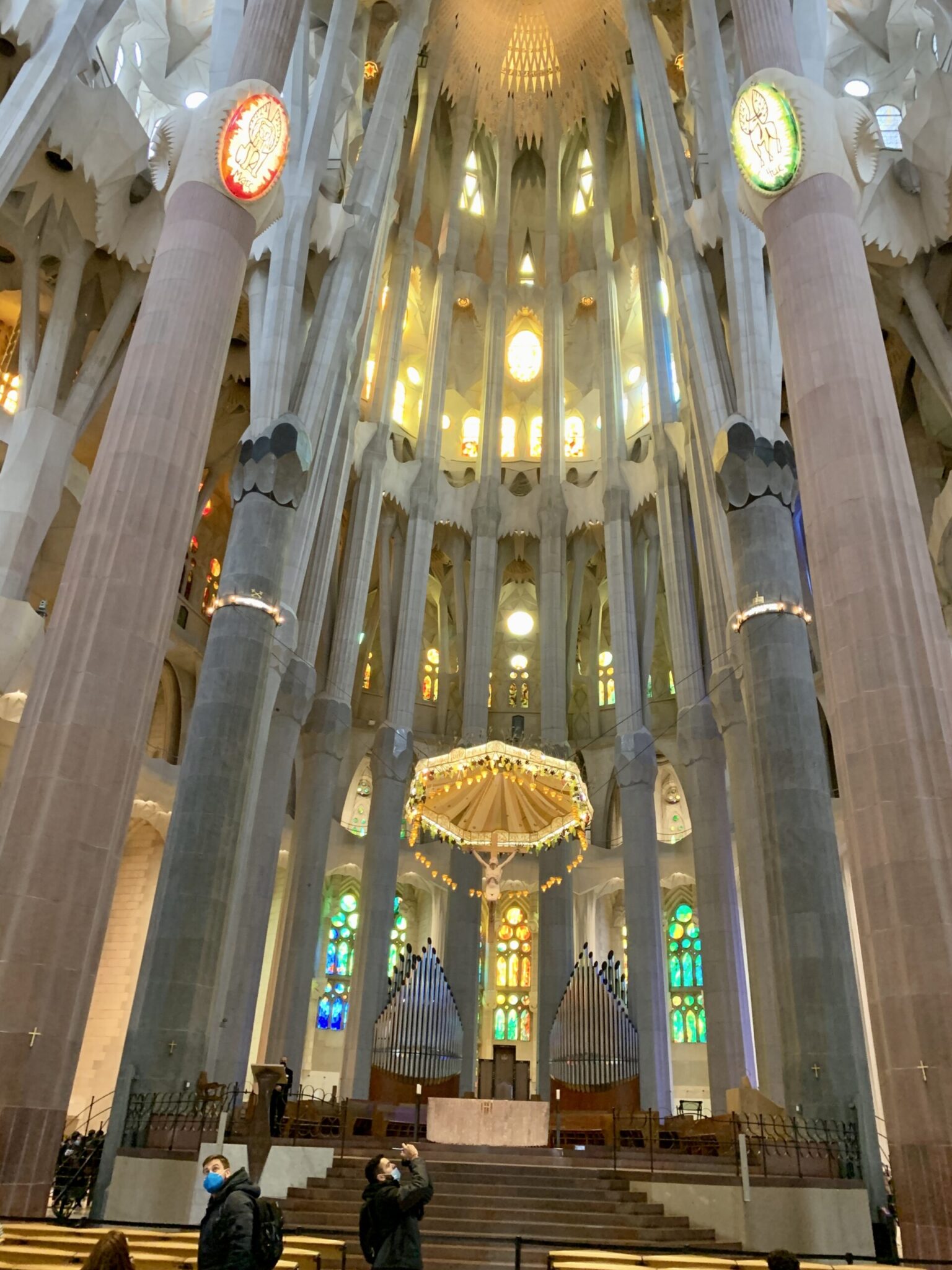
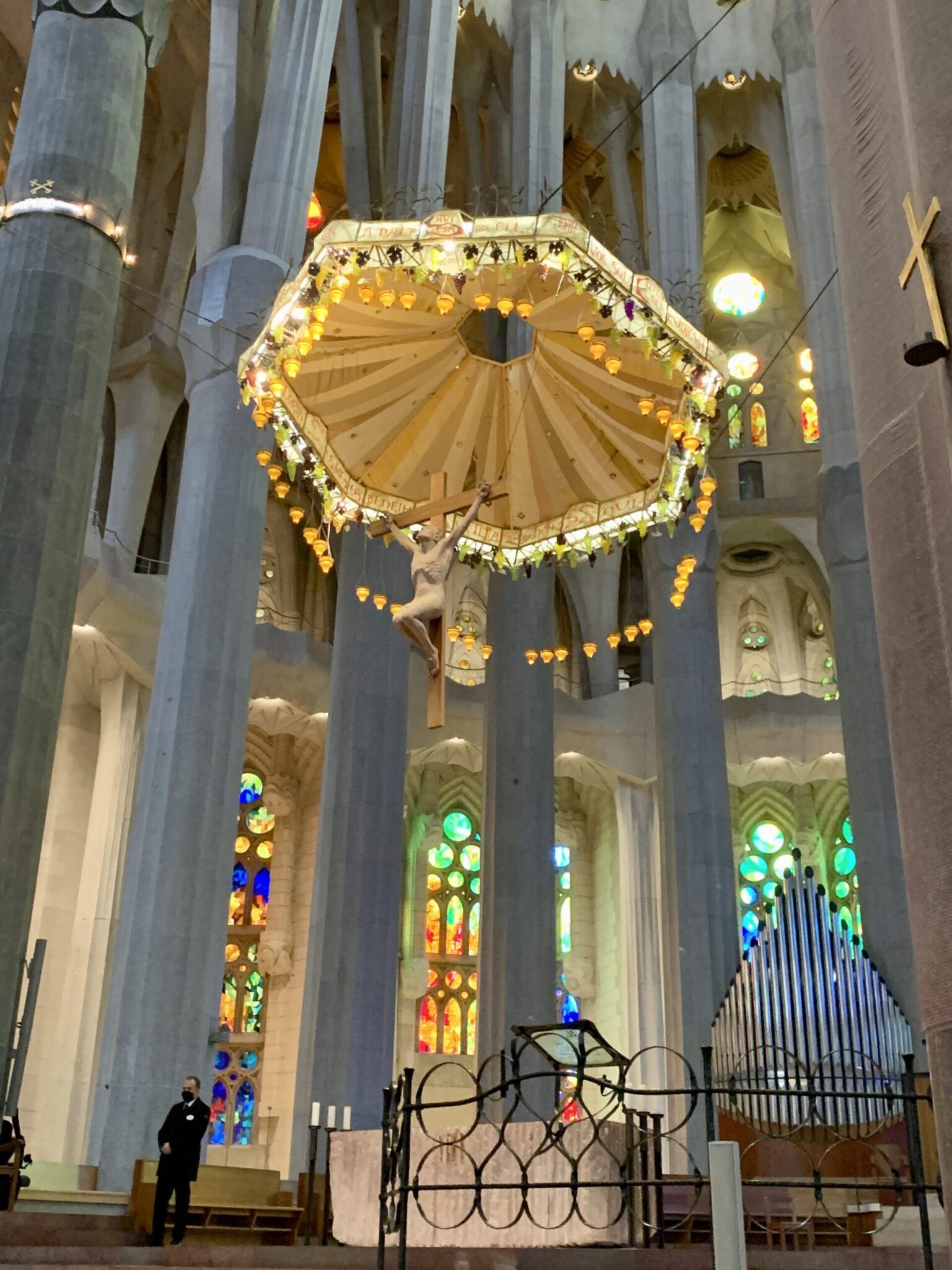
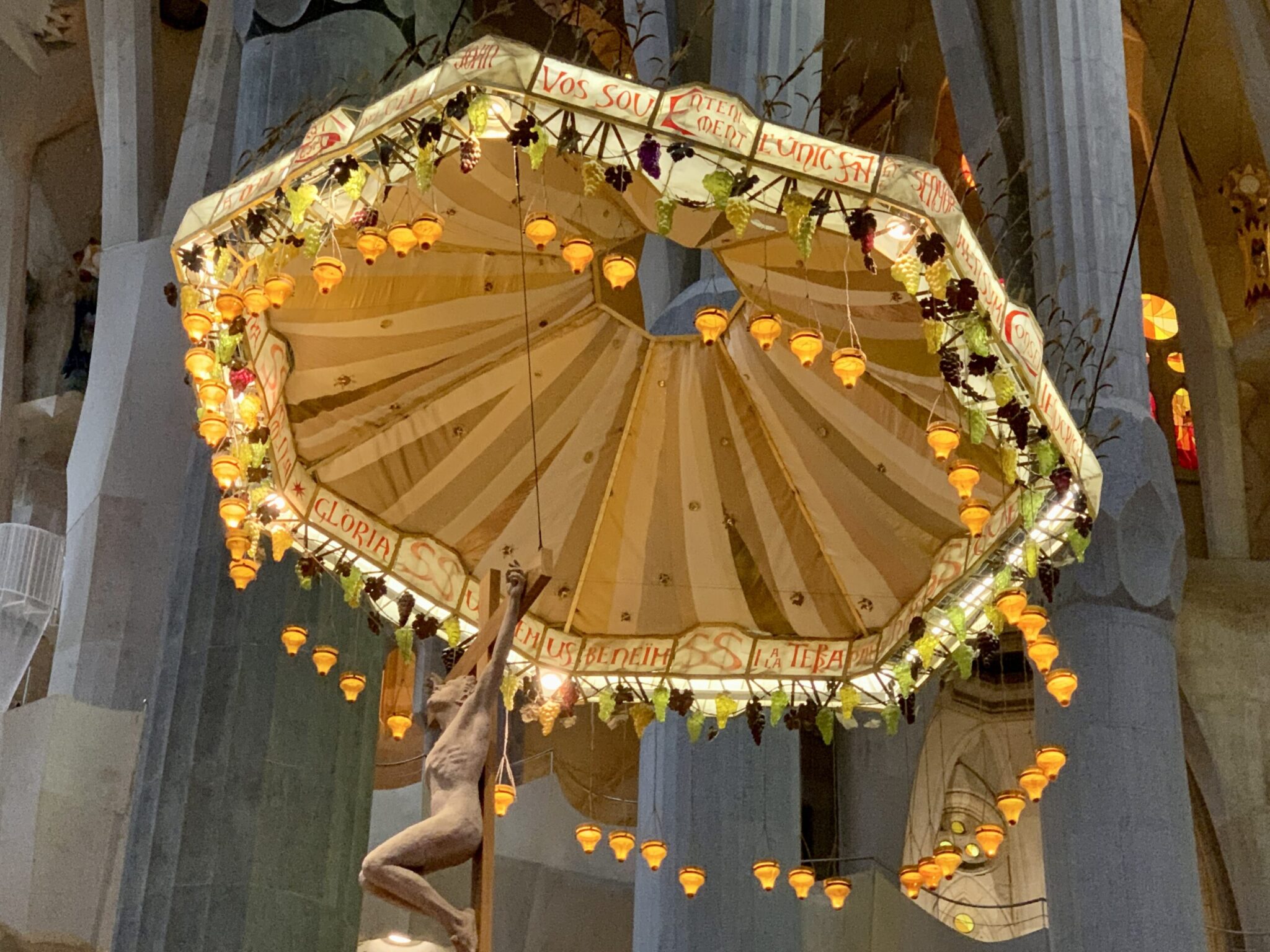
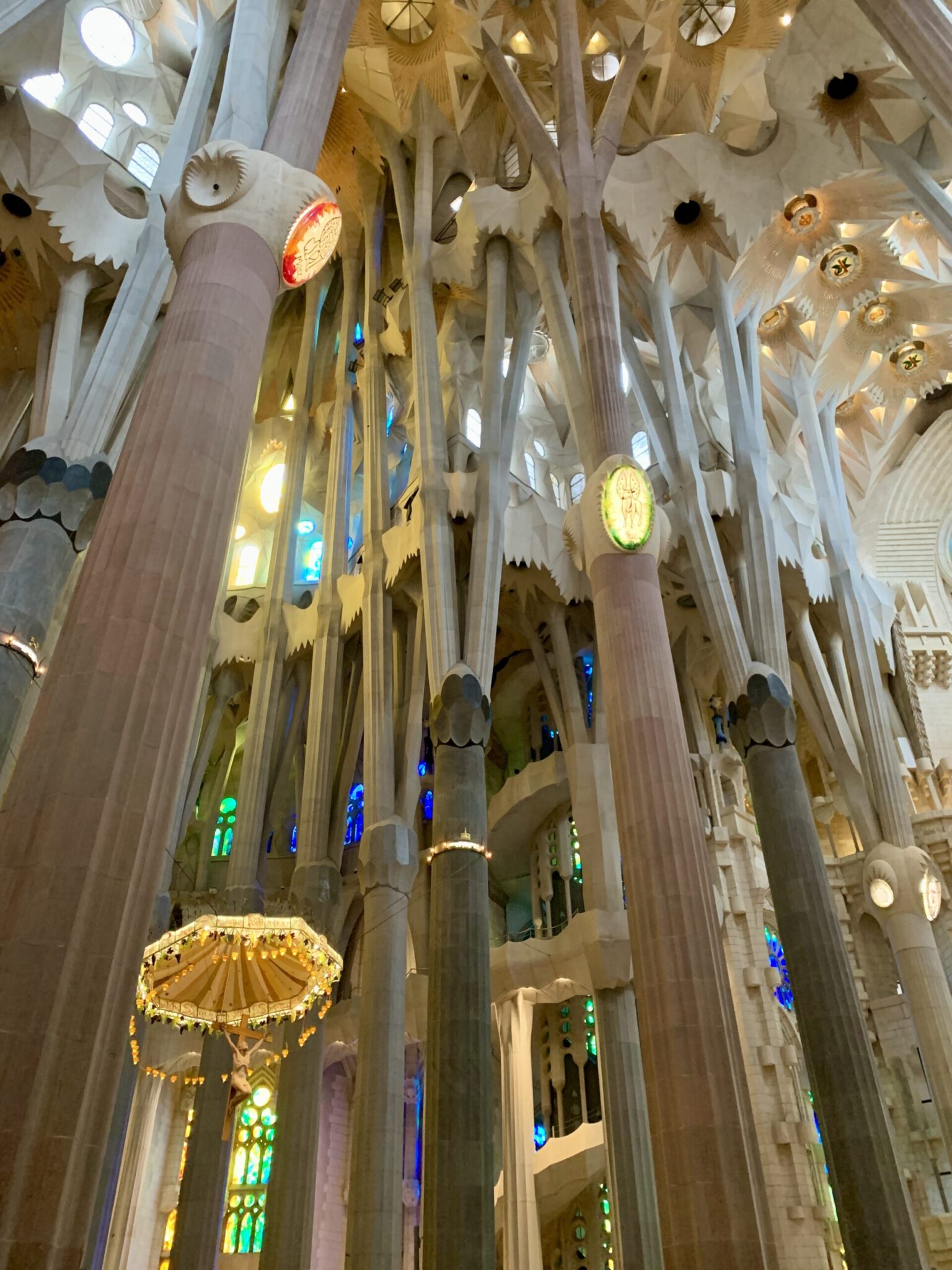
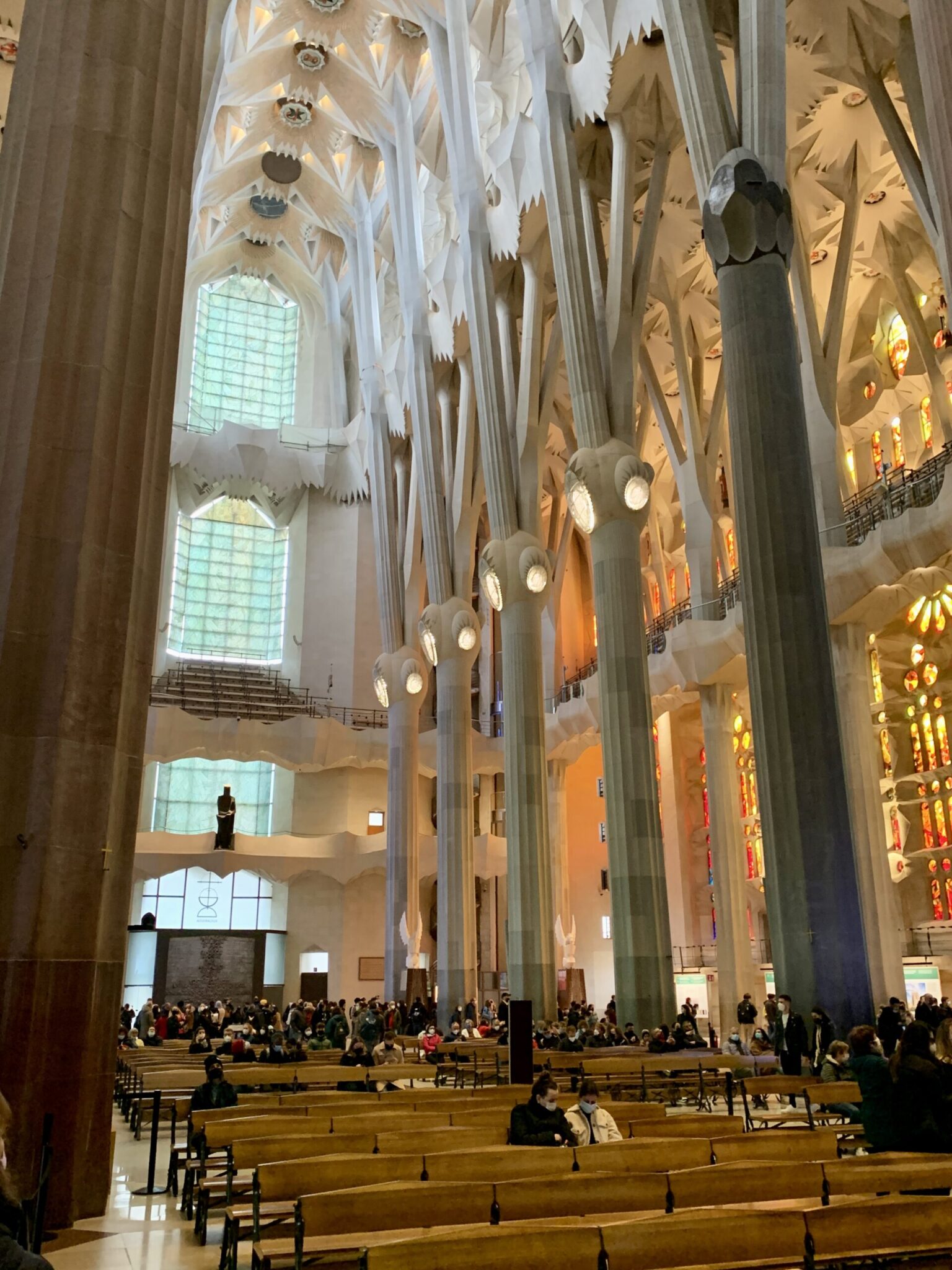
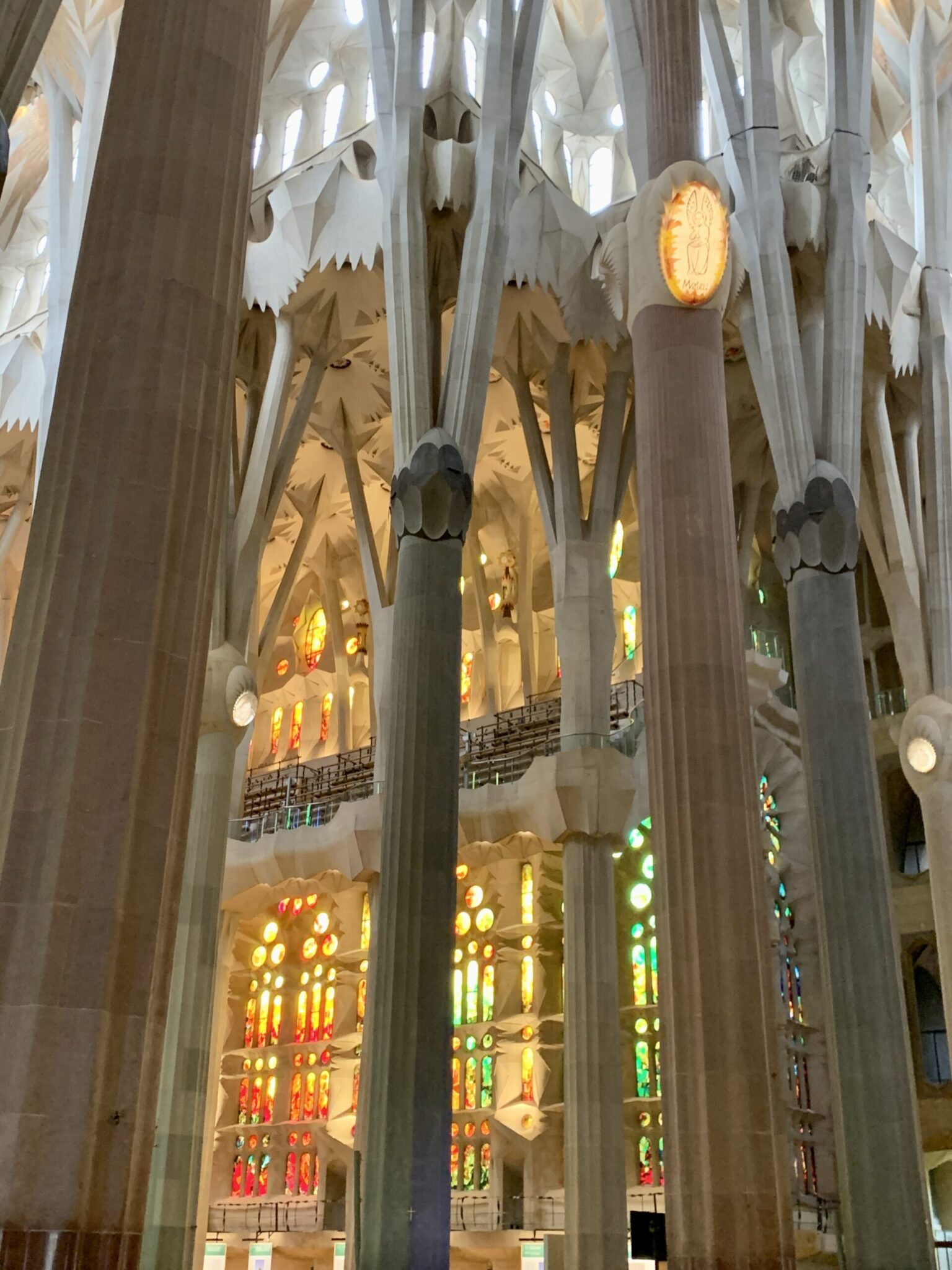
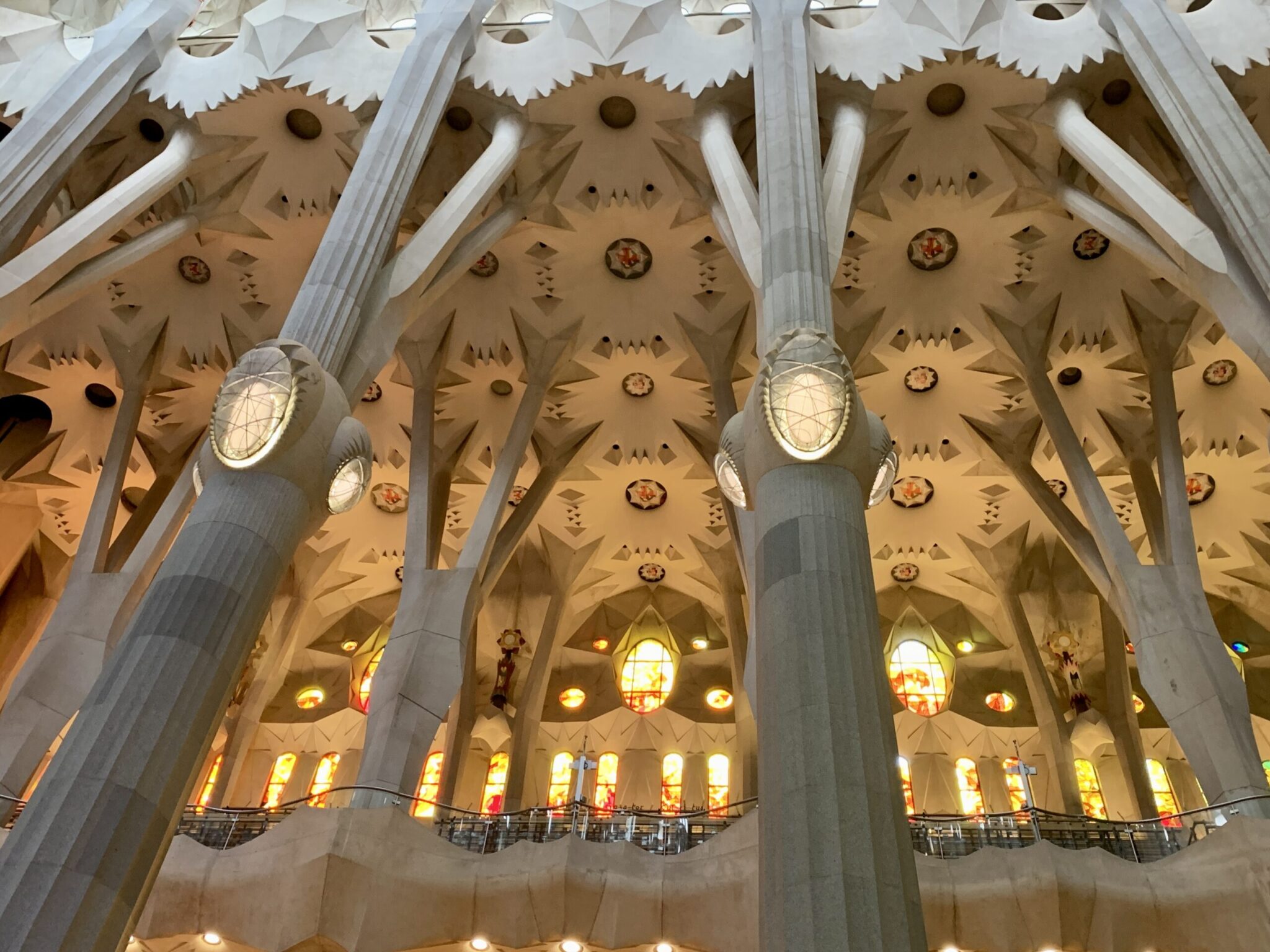
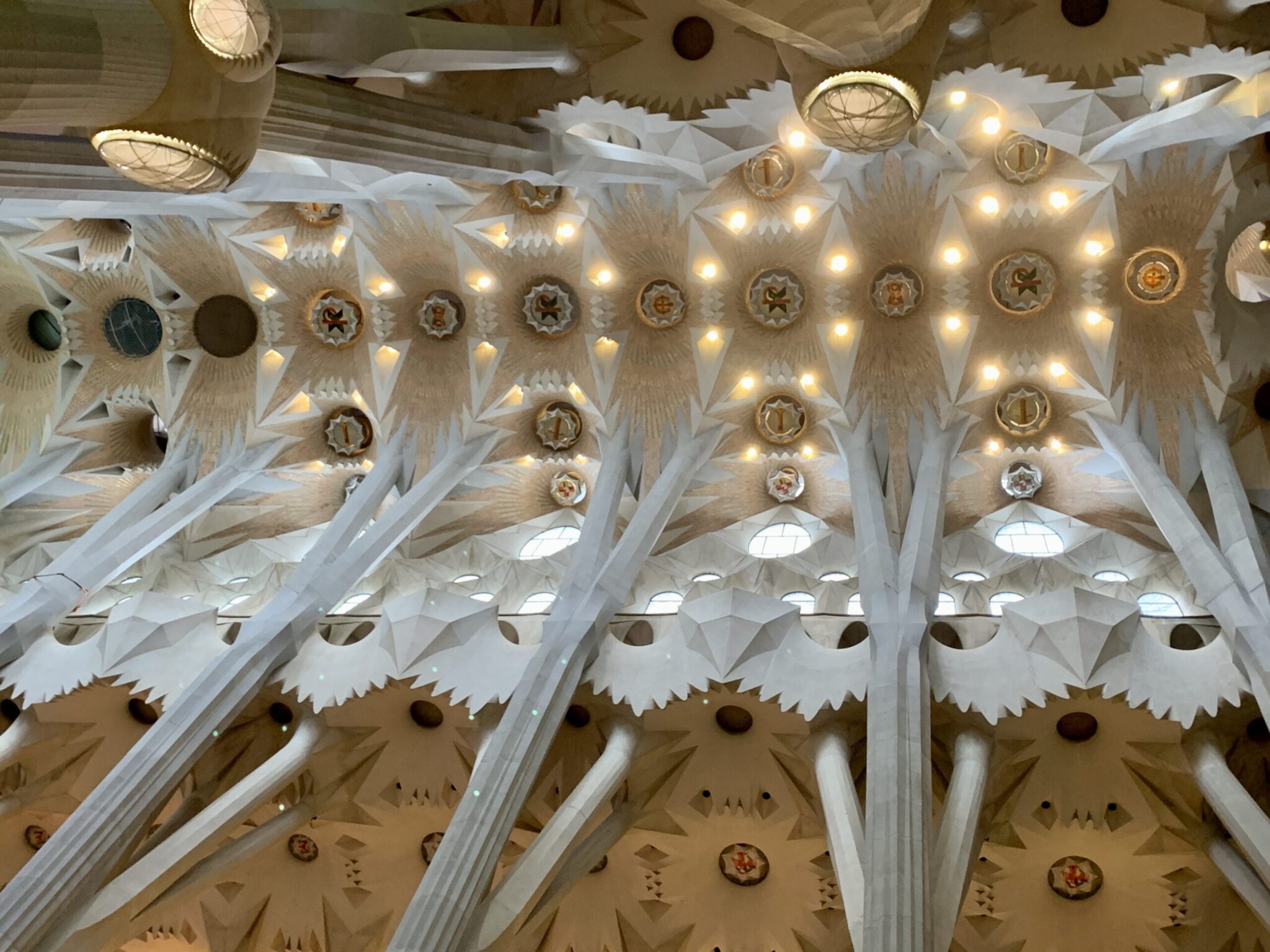

Windows on the eastern side are blue tones to represent the cool morning. Orange and red are on the western side.
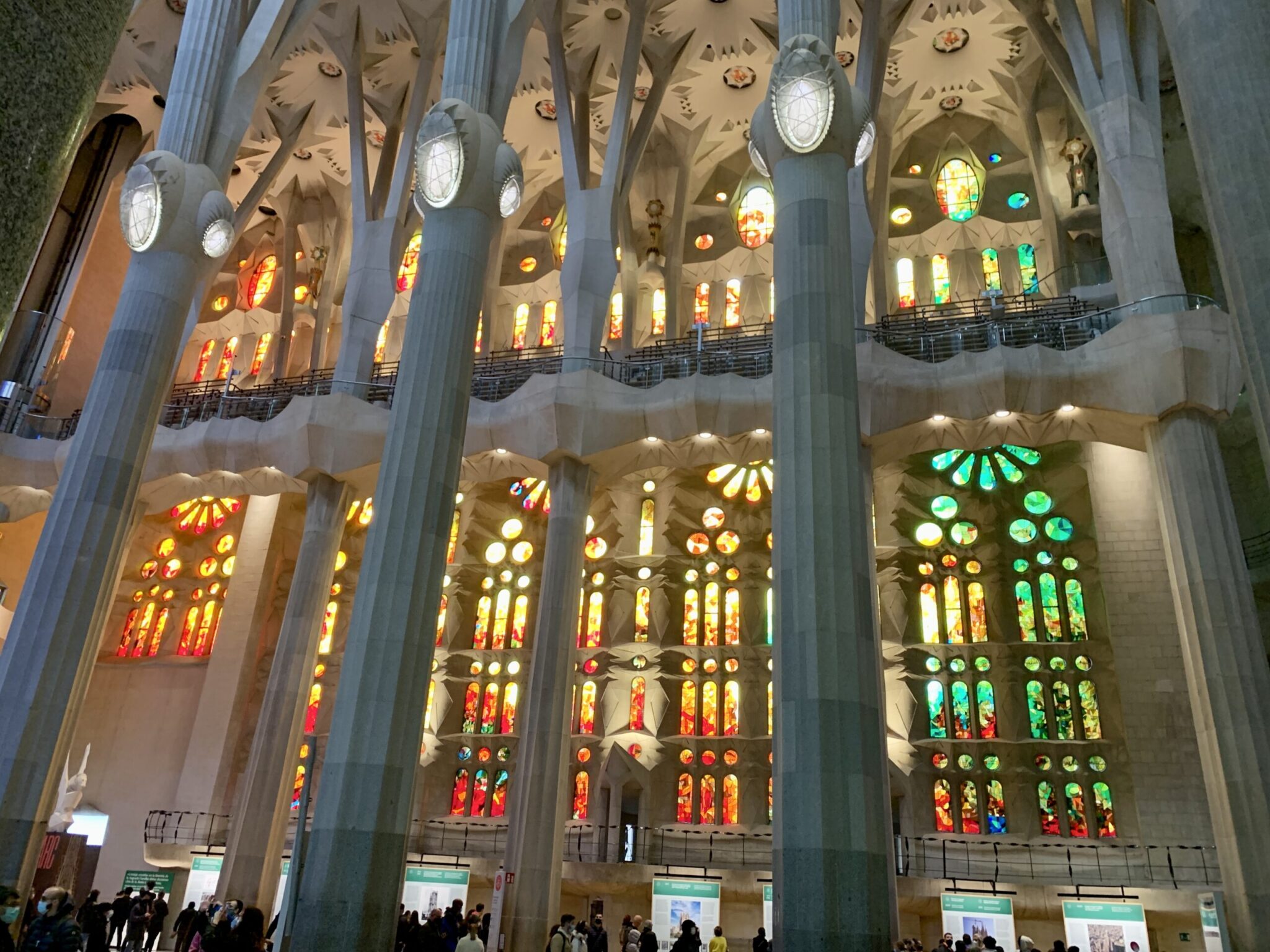

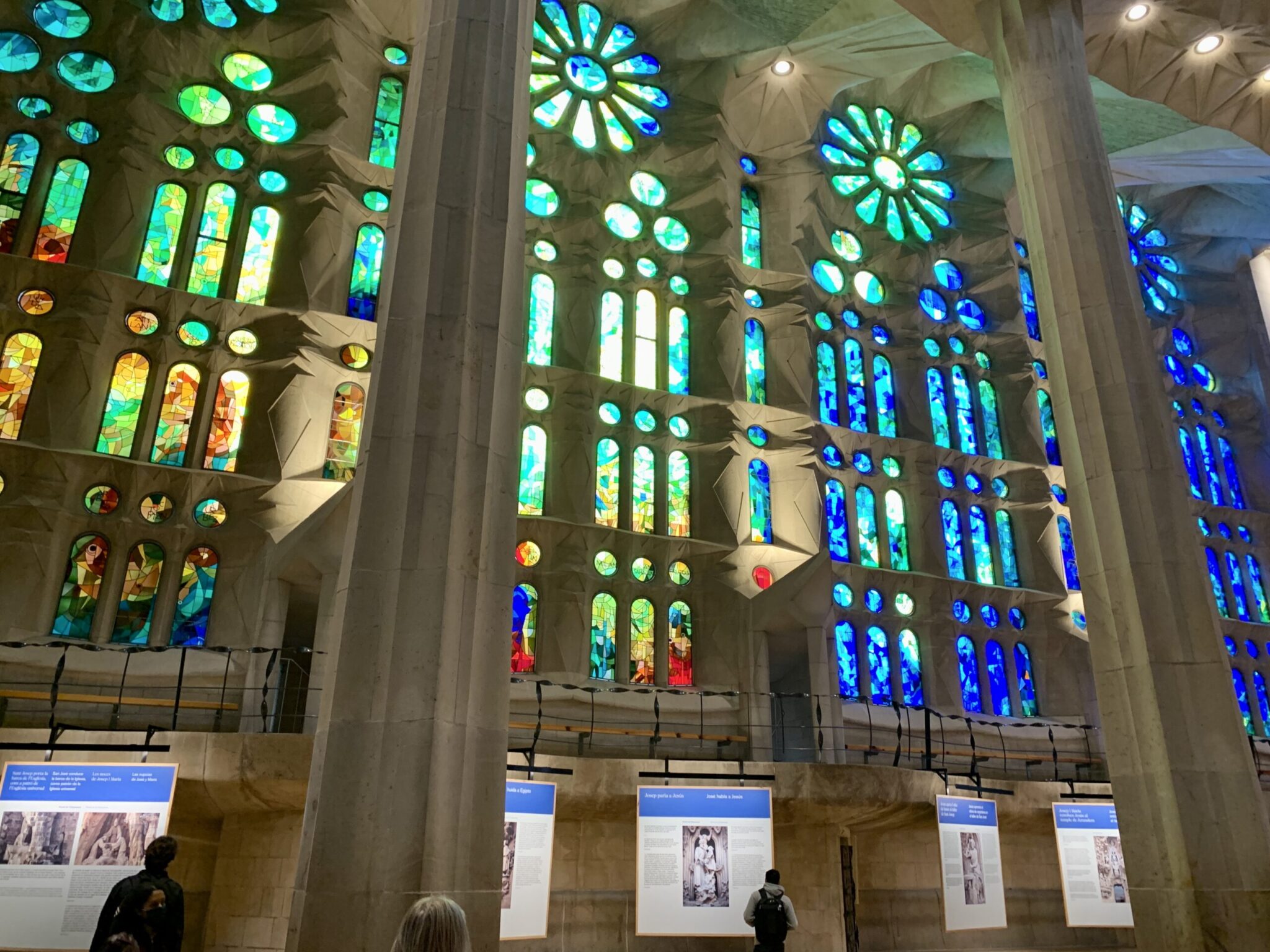
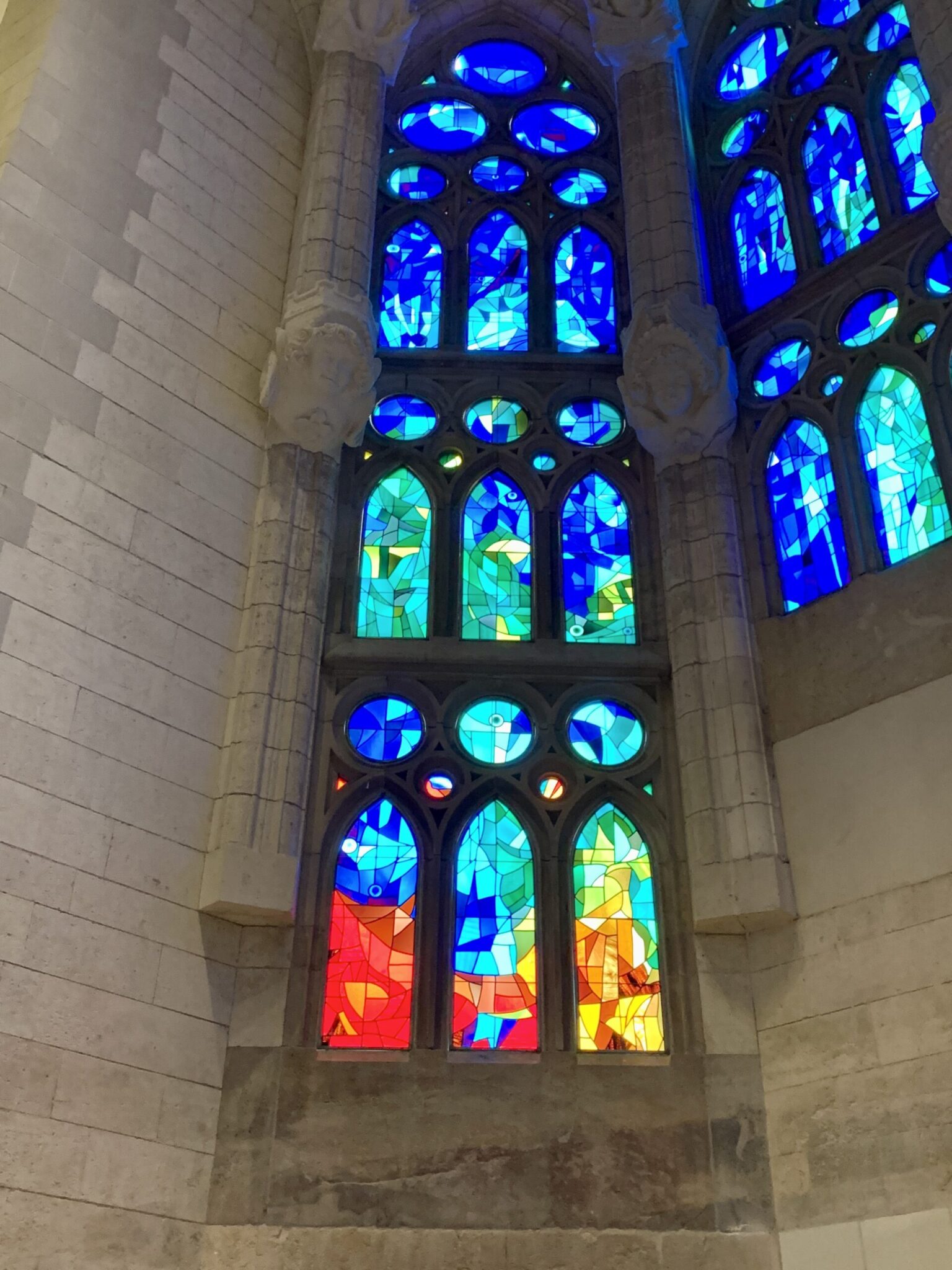
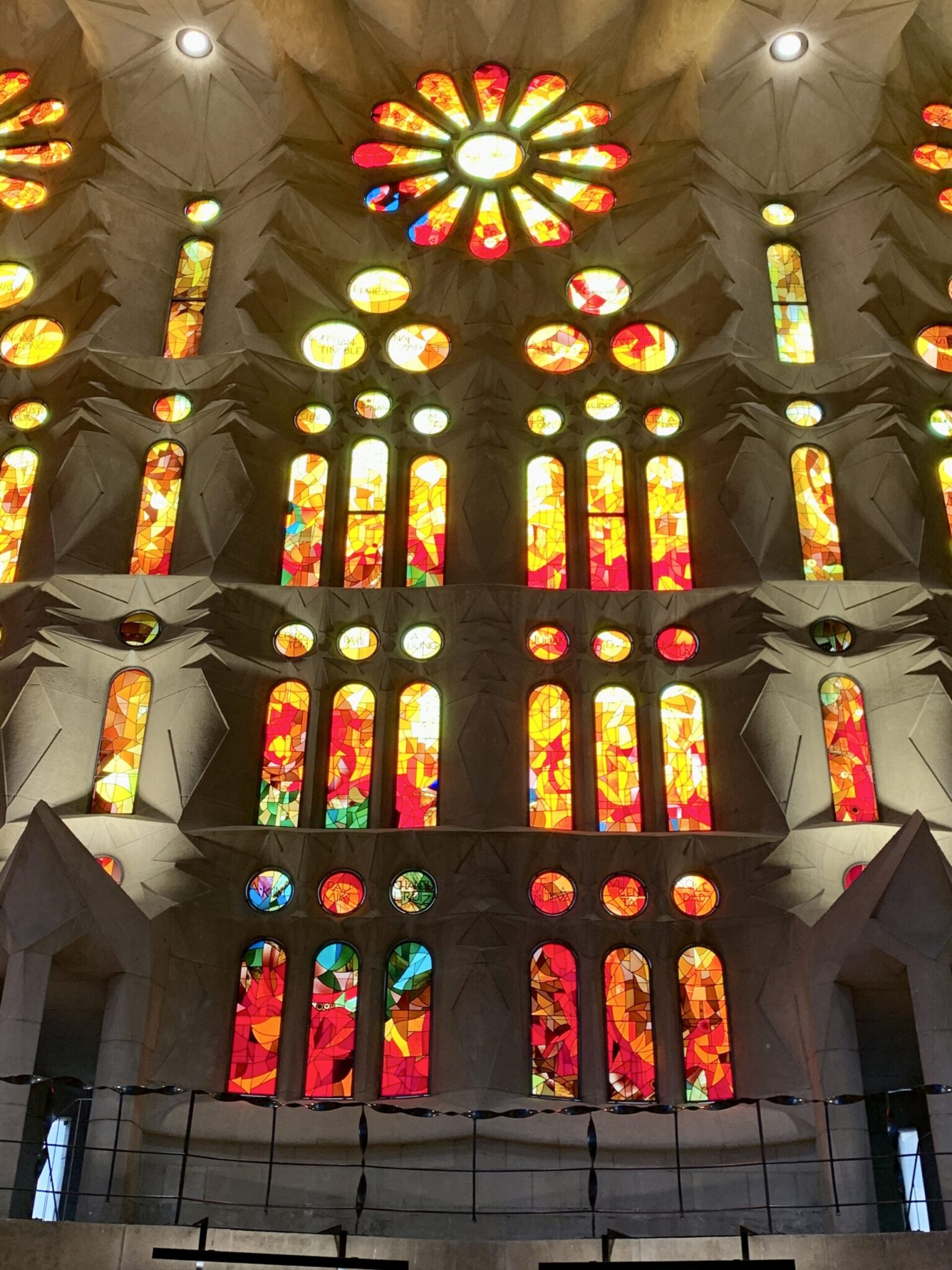
These doors contain the Lord’s Prayer. The primary text is in Catalan. There are many other languages can you find yours?
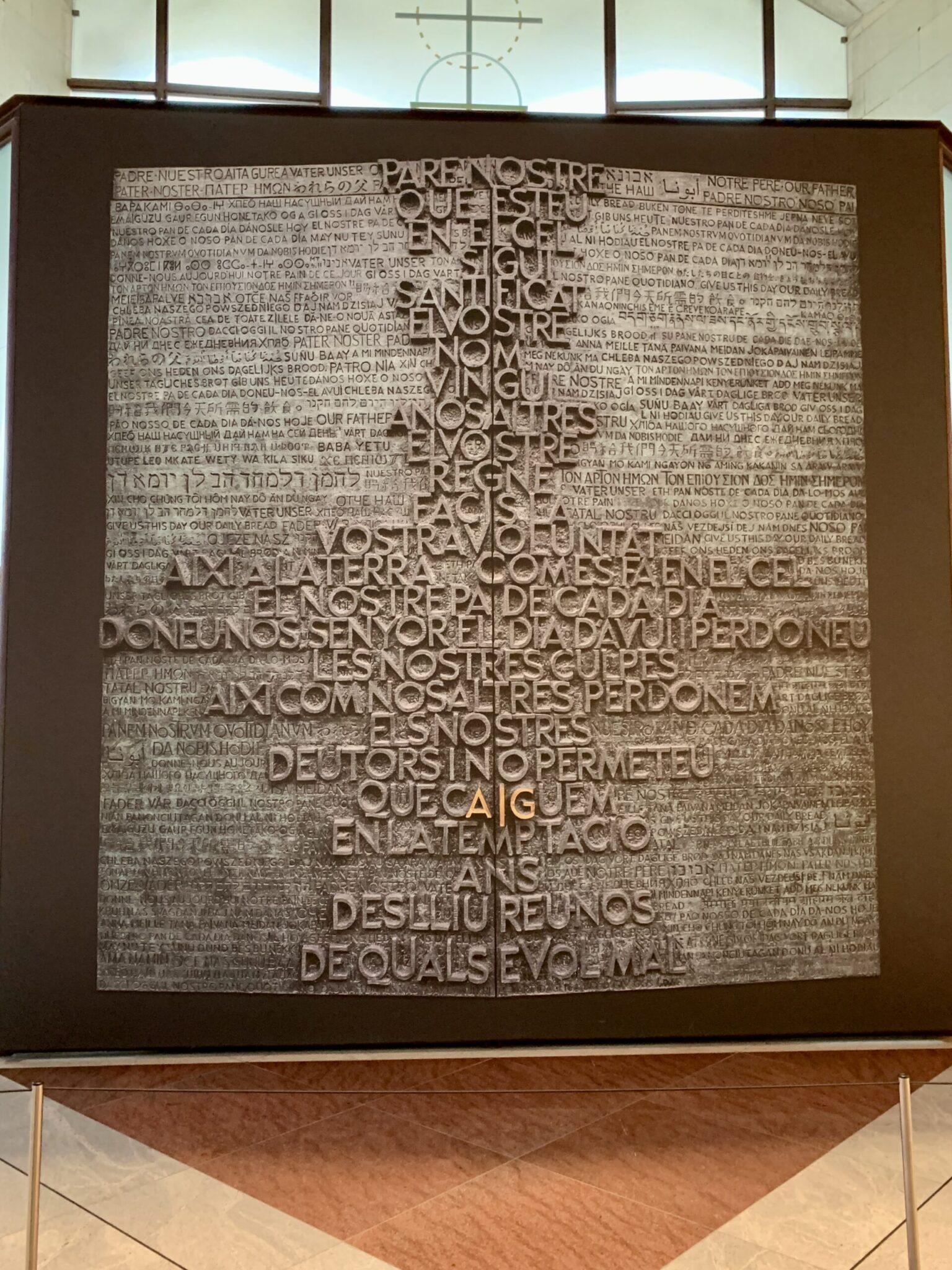
Another door of words.

One heck of a spiral staircase!

Finally, a few miscellaneous photos. First, the workshop where models are made and detail elements constructed. Remember, the Temple remains unfinished.
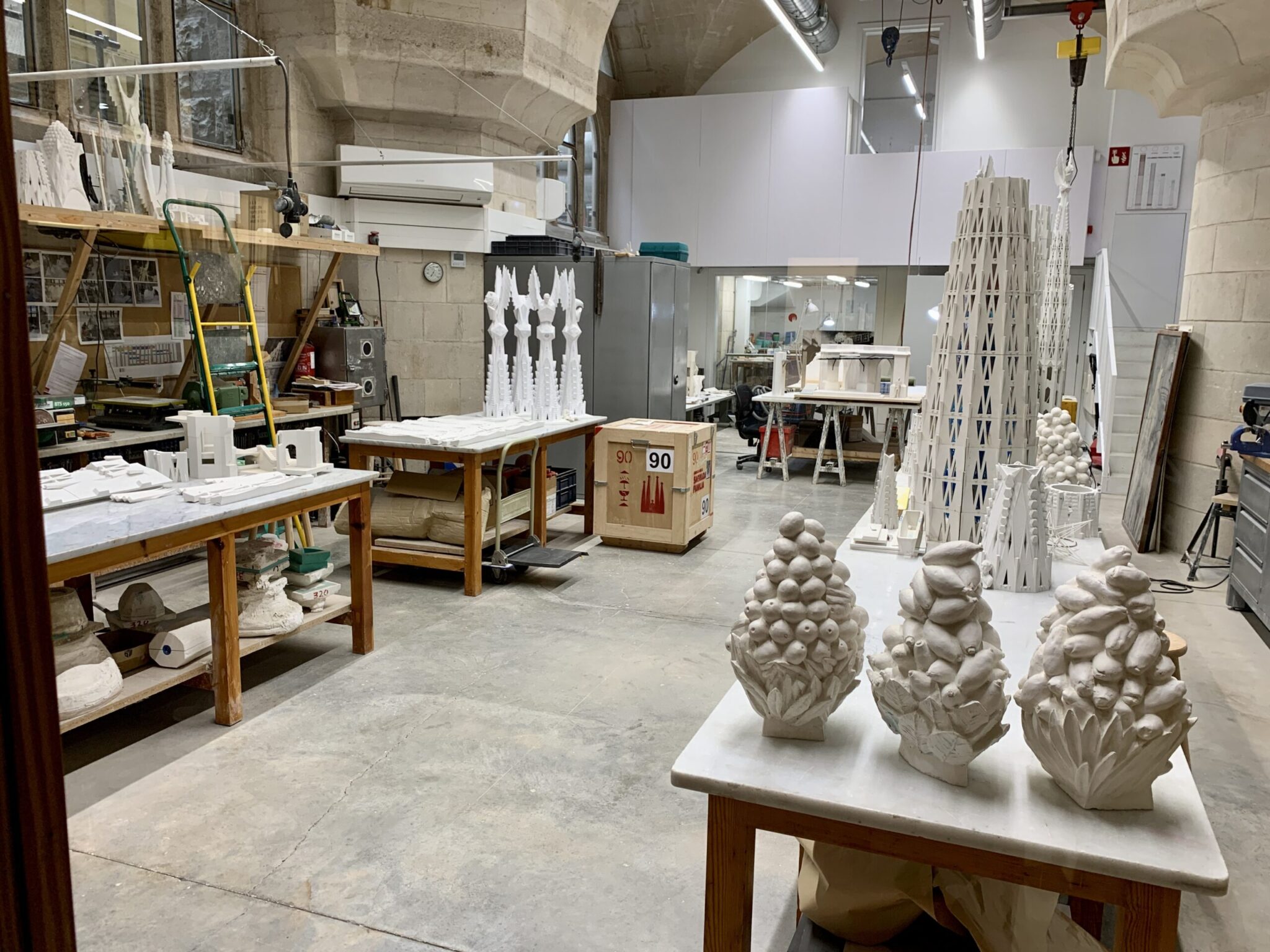
A model of a facade built for a Parisian exhibition. This was the first time the Temple was seen outside of Spain.
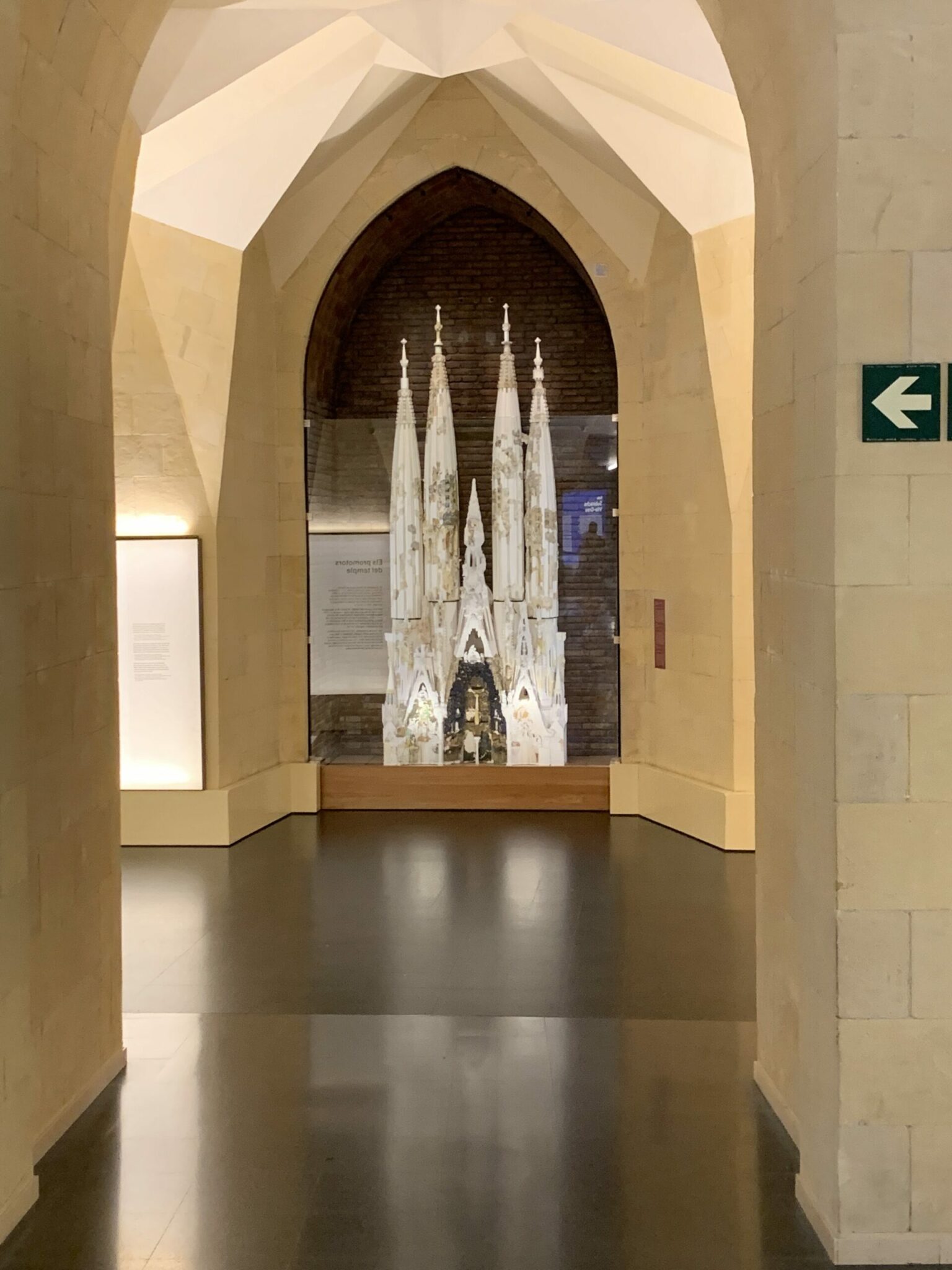
A model illustrating how the columns support the structure. Also, me.
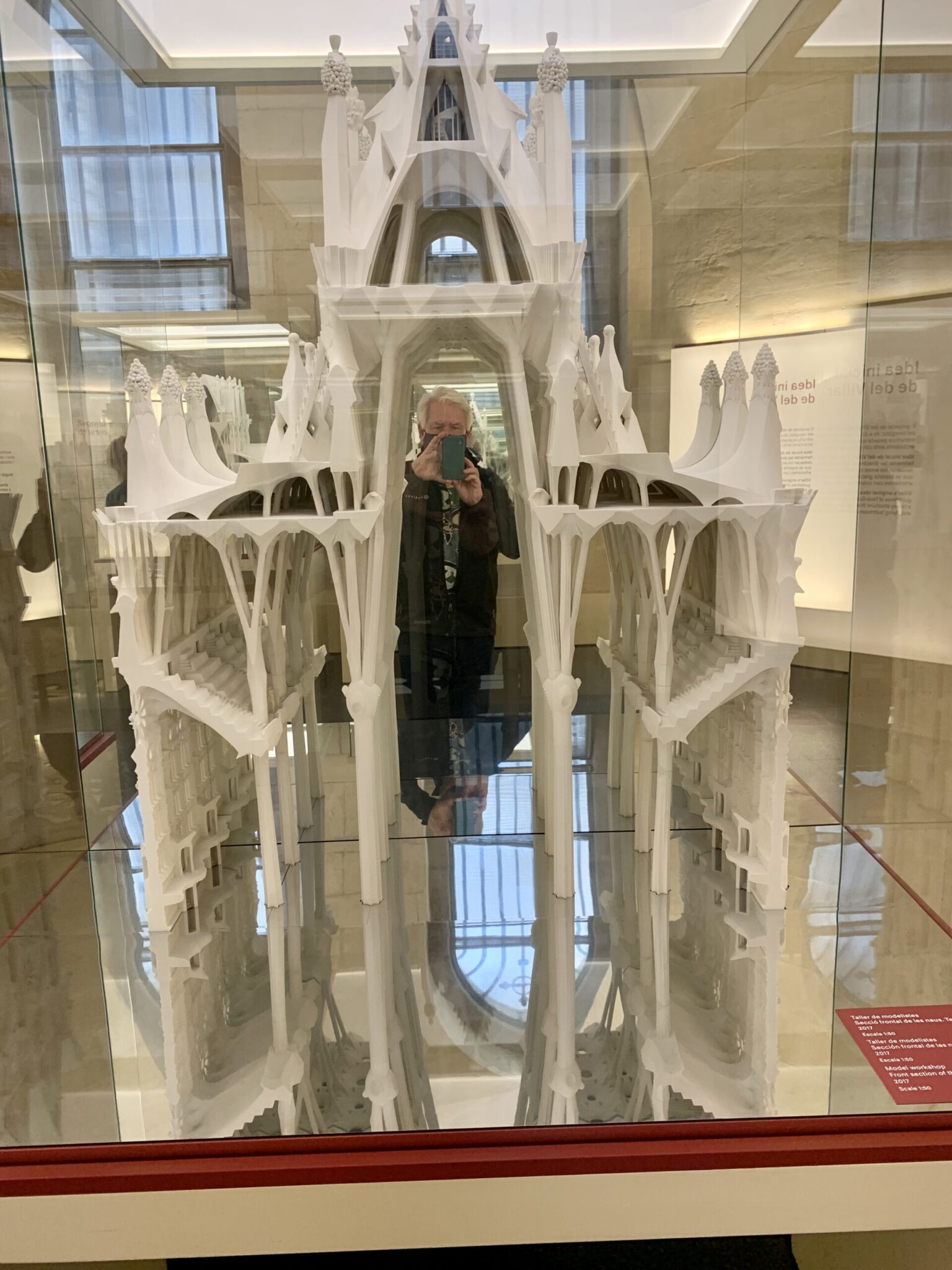
A photo of the state of construction early in the Twentieth century.
